August 9, 2018 - USS Yorktown (CV-10)
|
| We enjoyed our annual summer family beach vacation this year at Folly Beach, South Carolina which is just south of Charleston. So of course I had to go visit the USS Yorktown, CV-10, at Patriot's Point. Here I am with grandsons William and Griffin, son-in-law Don and Maggie's friend Beau. |
| |
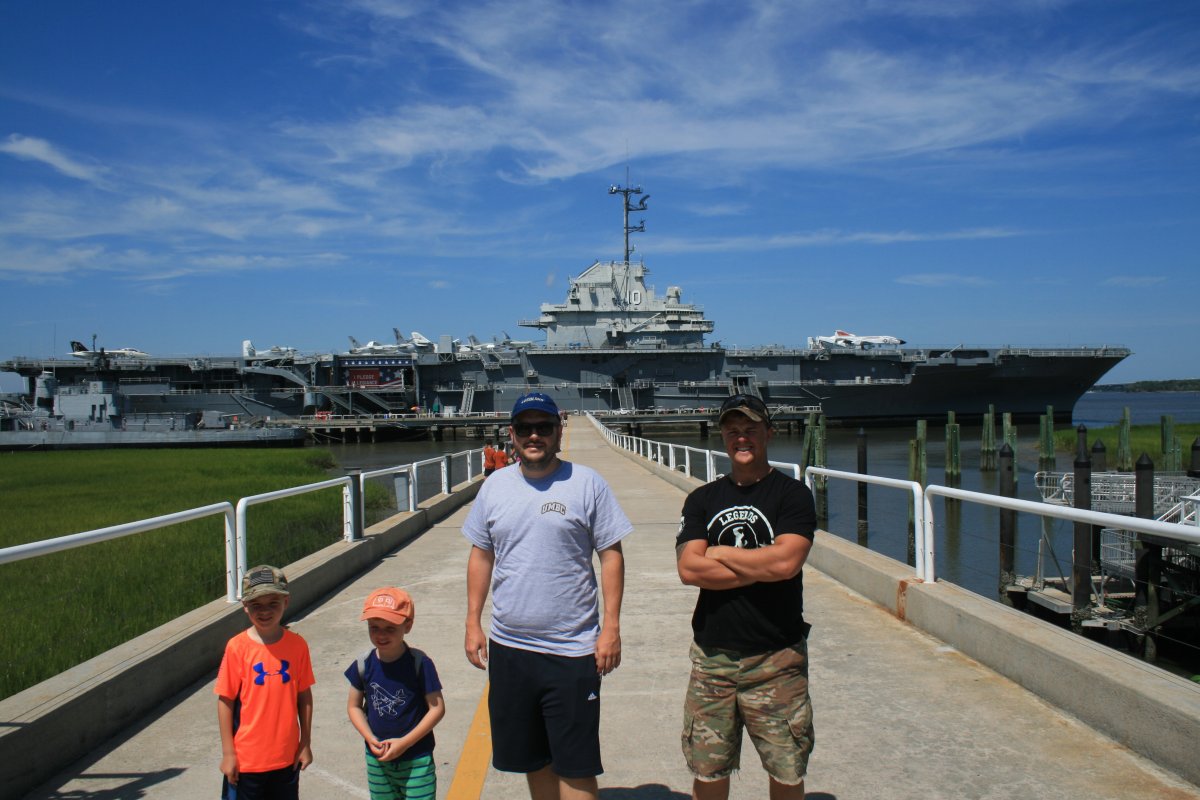 |
|
|
I had visited the Yorktown once before when I was stationed at Charleston Naval Base with Destroyer Squadron 20 from 1988-1990. A long time ago.
Patriot's Point also includes the USS Laffey, -- the ship that would not die -- a World War II Destroyer, pictured here in front of the stern of the Yorktown, where an F-14 Tomcat sits.
|
| |
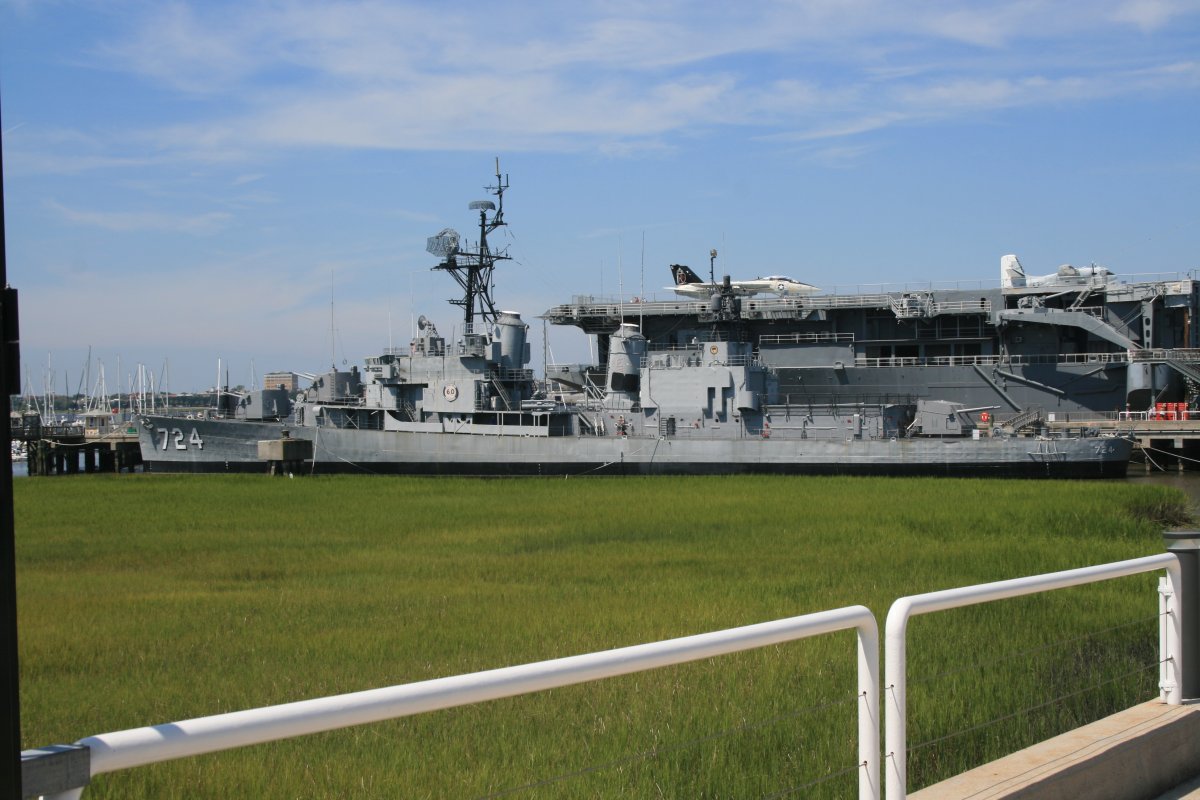 |
|
| The modern Arthur Ravenel Bridge crosses the Cooper River. |
| |
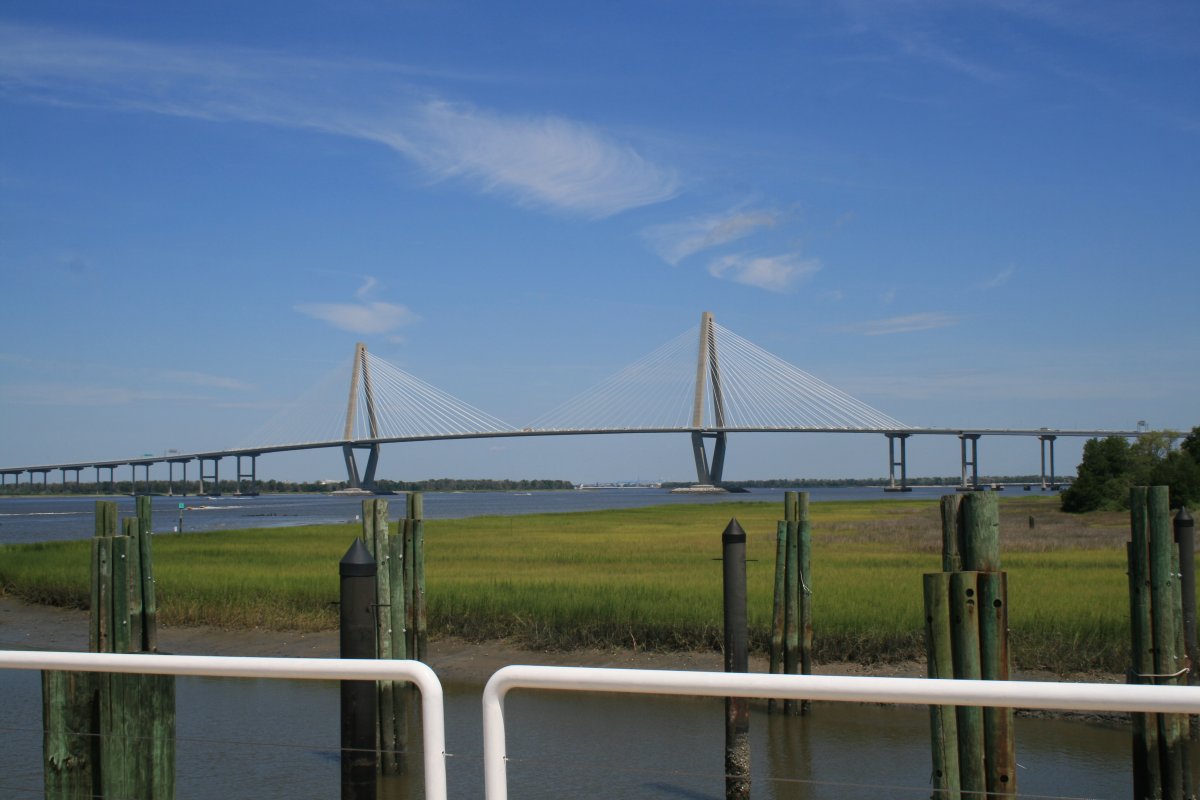 |
|
|
Walking the flight deck. They had quite a few Navy jets up here, including that F-4 Phantom on the left.
|
| |
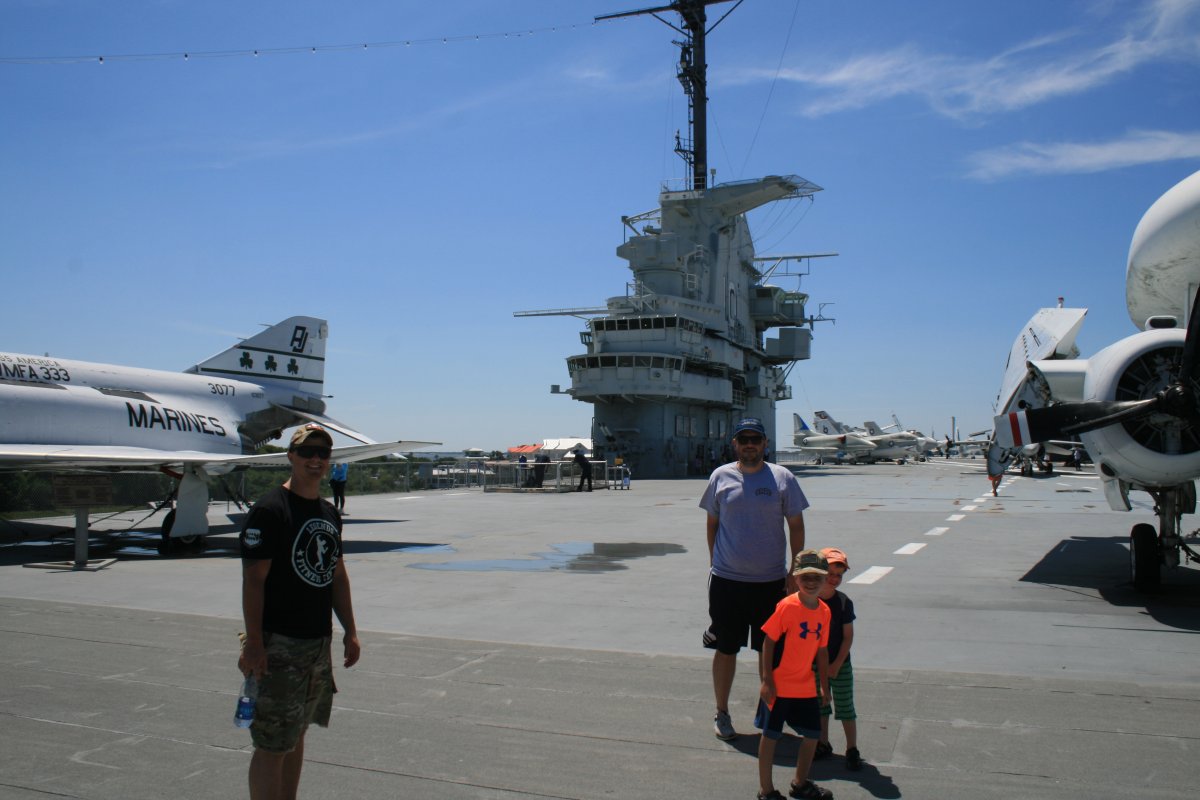 |
|
| The Yorktown was an Essex-class carrier. She was commissioned in April 1943 and fought in most of the WWII Pacific War battles after that. She served in the Vietnam war and was a recovery ship for the Apollo 8 space mission. Yorktown was decomissioned in 1970 and came to Patriot's Point in 1975. |
| |
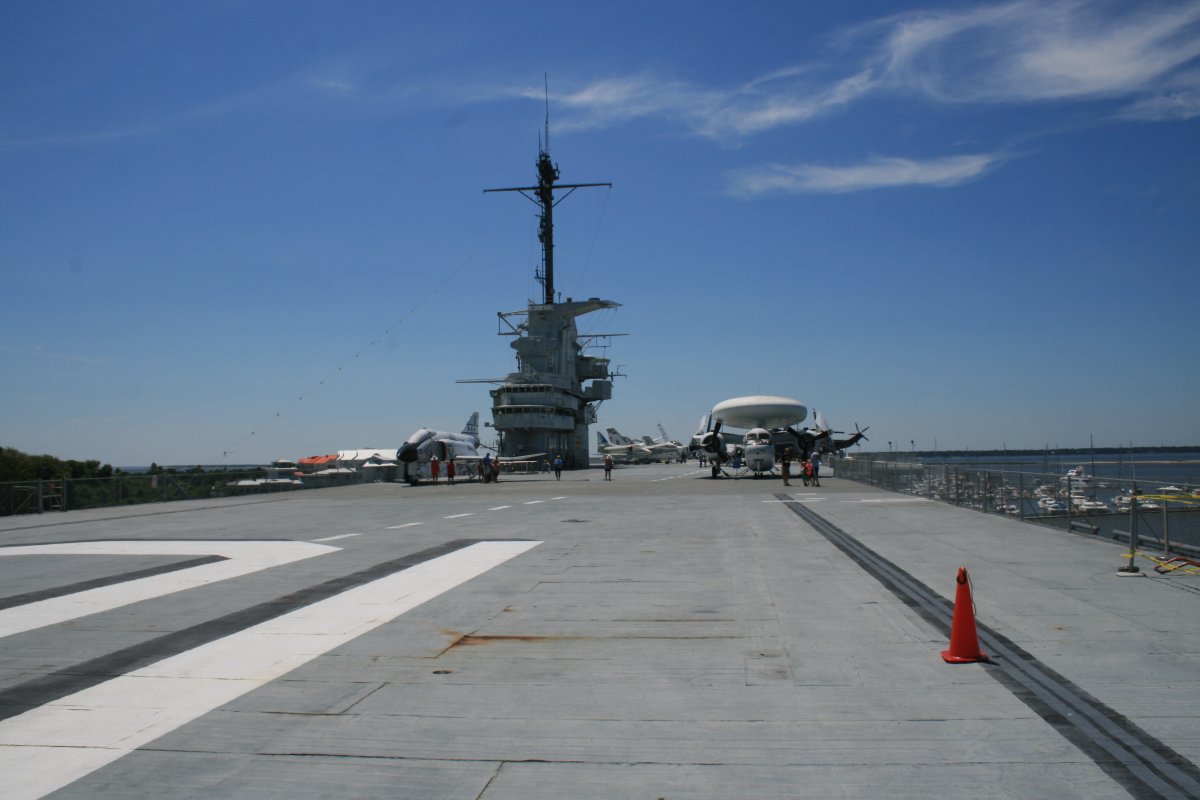 |
|
| Don, Beau and the boys in front of one of my favorite all time planes: the F-14 Tomcat, in VF-143 (The Pukin Dogs) colors. It's hard to believe the F-14 is no longer in service. |
| |
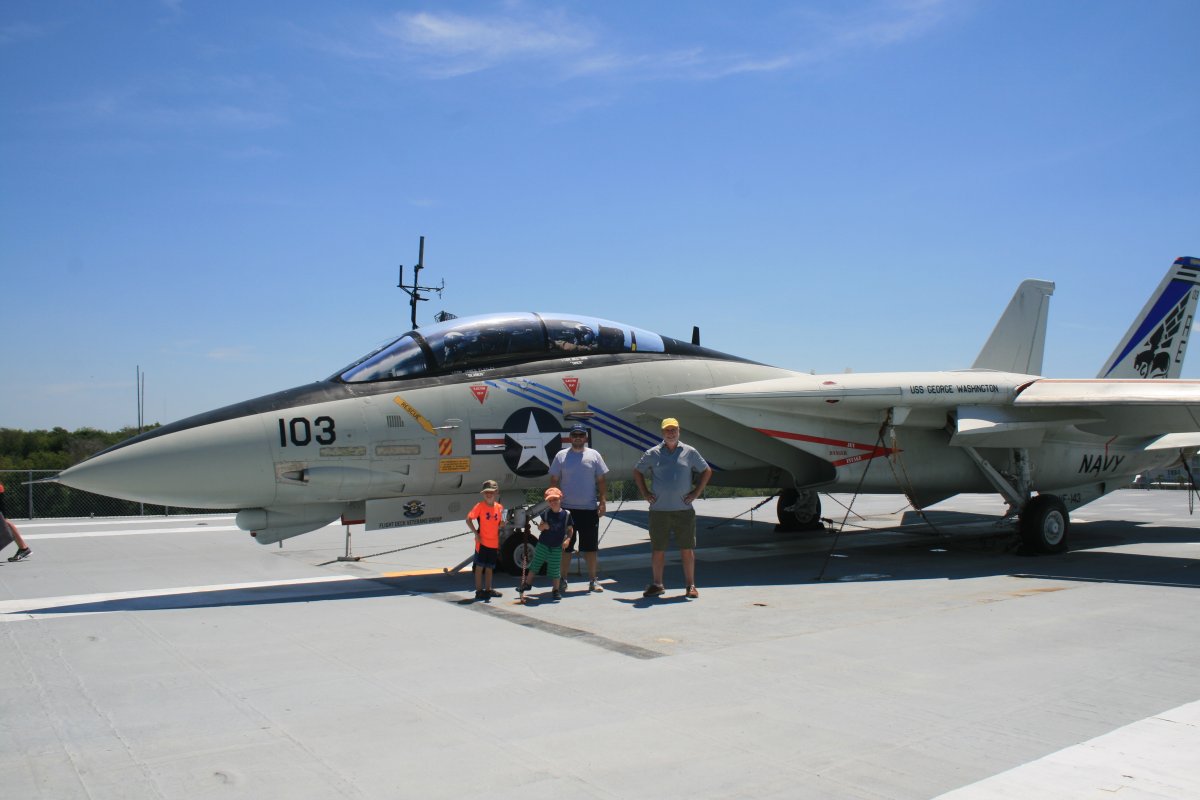 |
|
| Looking down and aft from the Island. |
| |
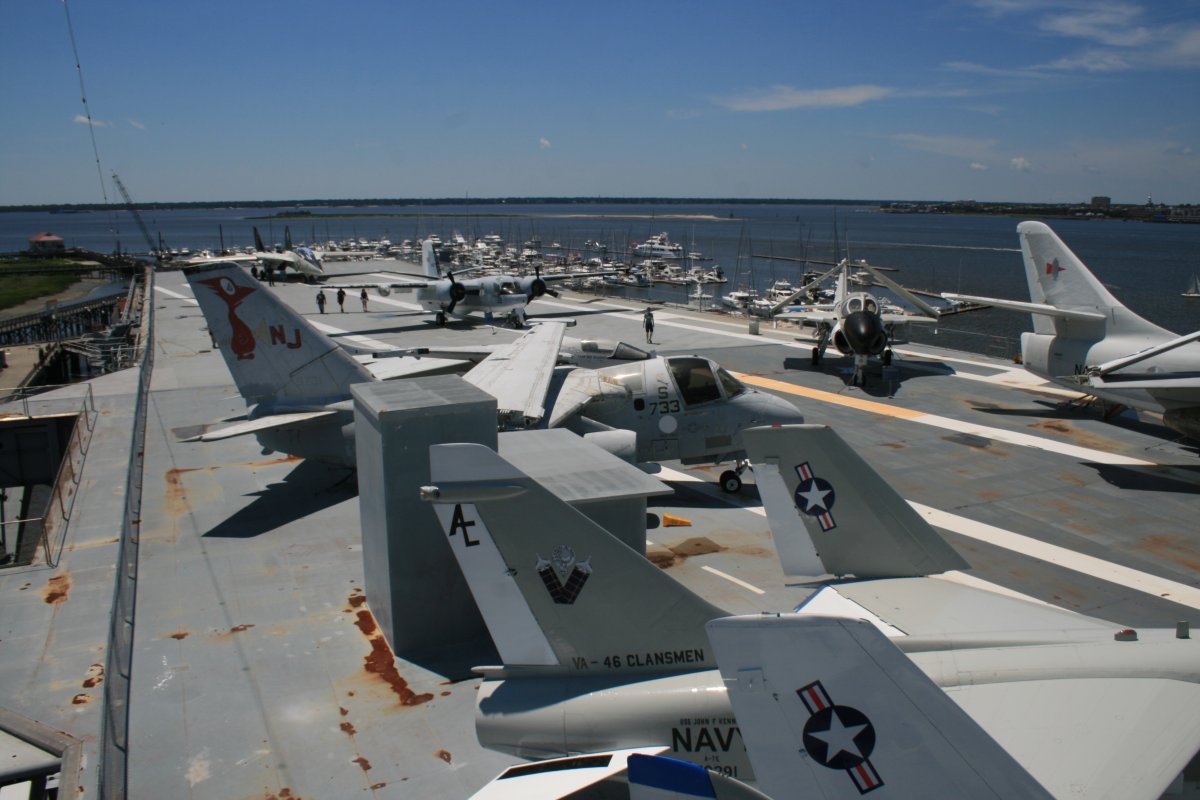 |
|
|
The conning area in the Island.
|
| |
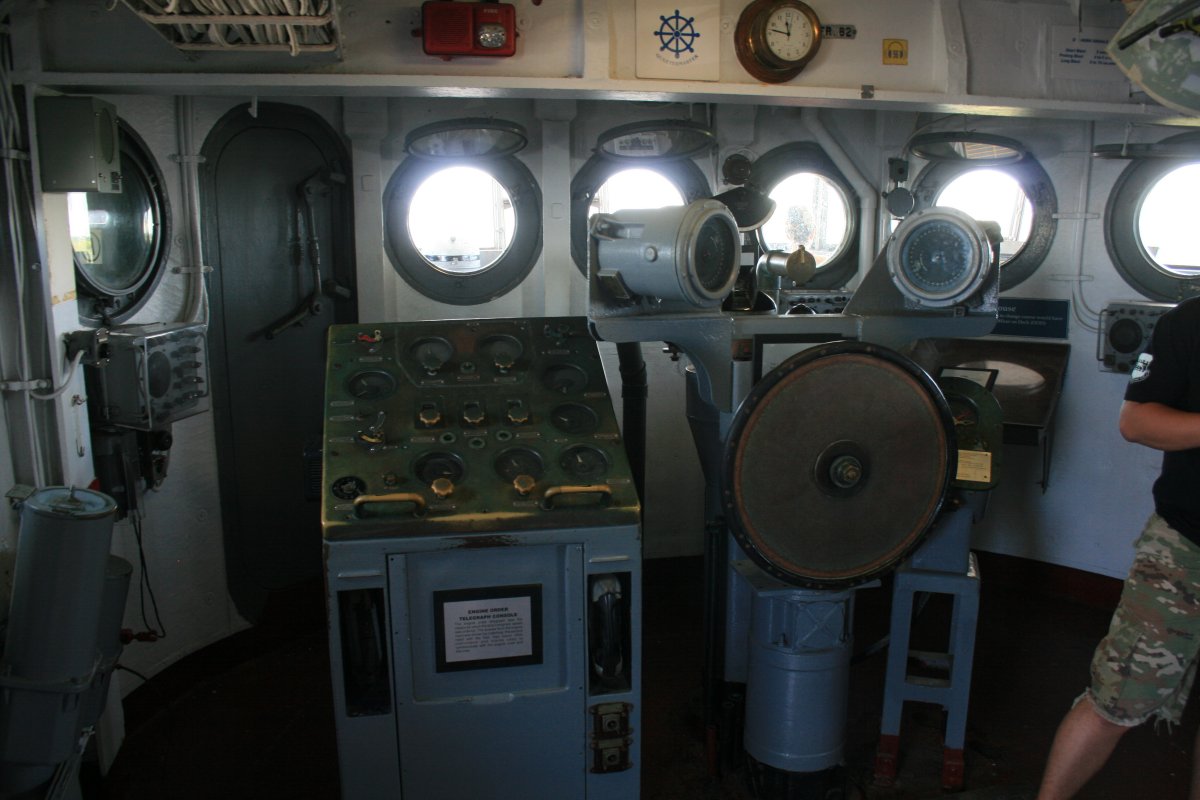 |
|
| The Bridge. |
| |
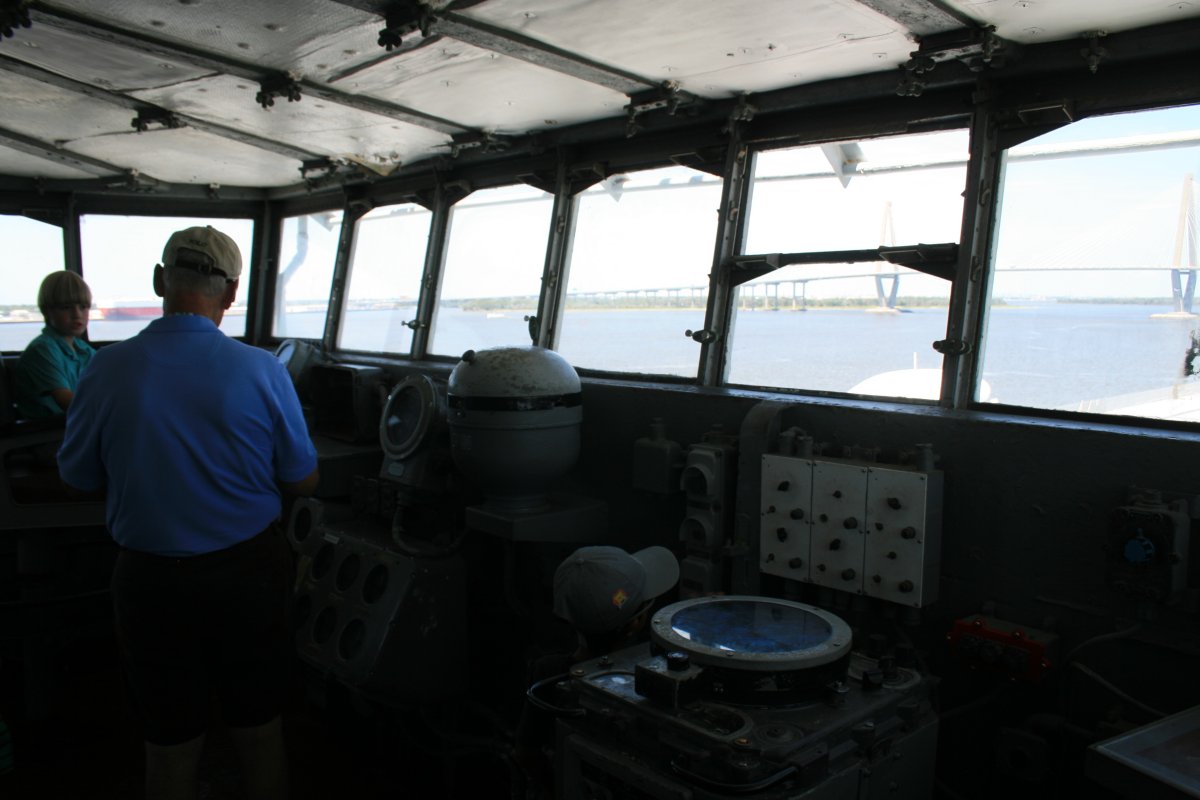 |
|
|
Looking down from the Island at an F-18 Hornet.
|
| |
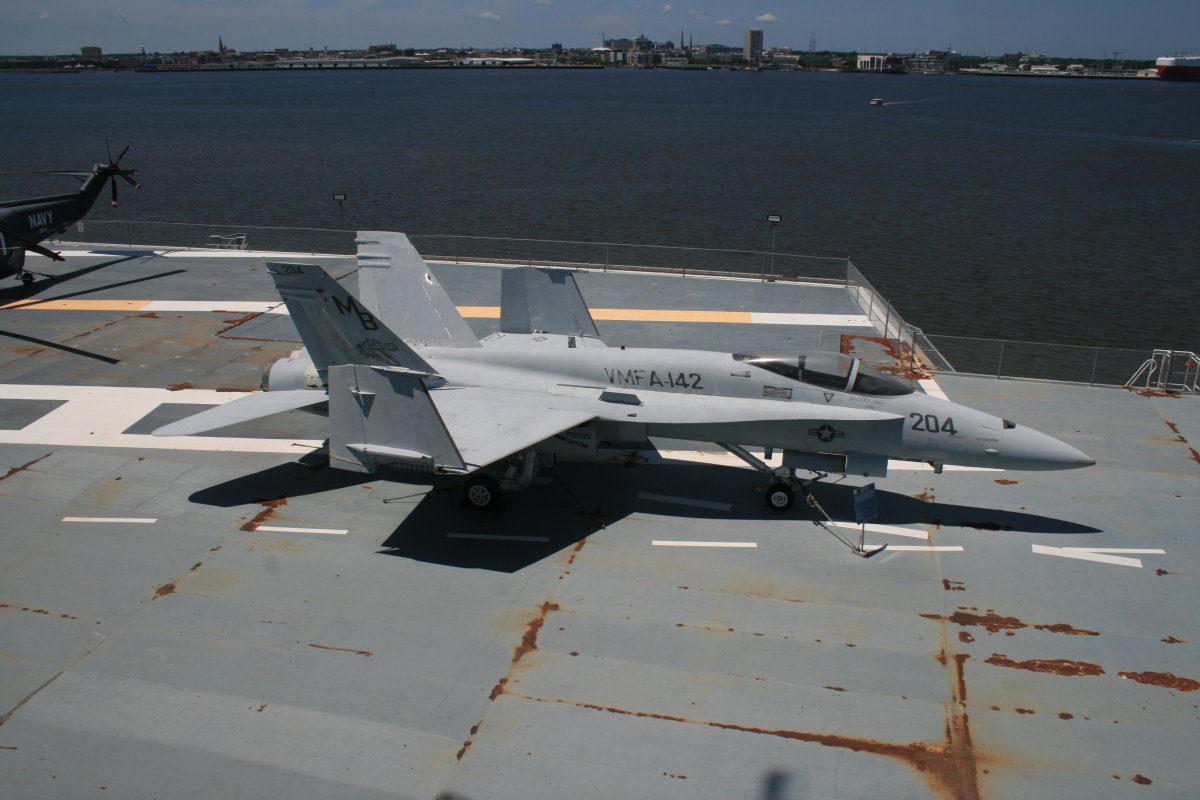 |
|
| Underneath the flight deck, in the main hangar area, they had a very nice collection of WWII Navy aircraft, starting with this F4F Wildcat. |
| |
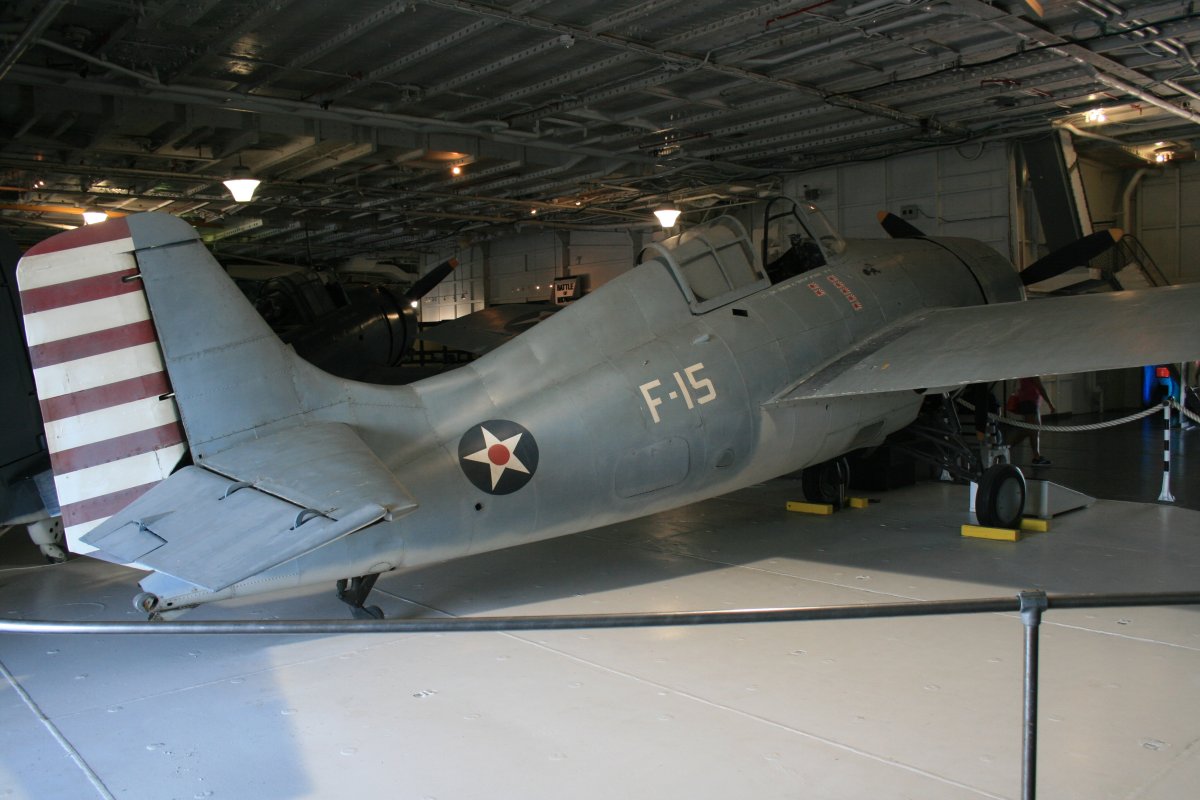 |
|
| The great US Navy Dauntless dive bomber which was the decisive weapon at the Battle of Midway. |
| |
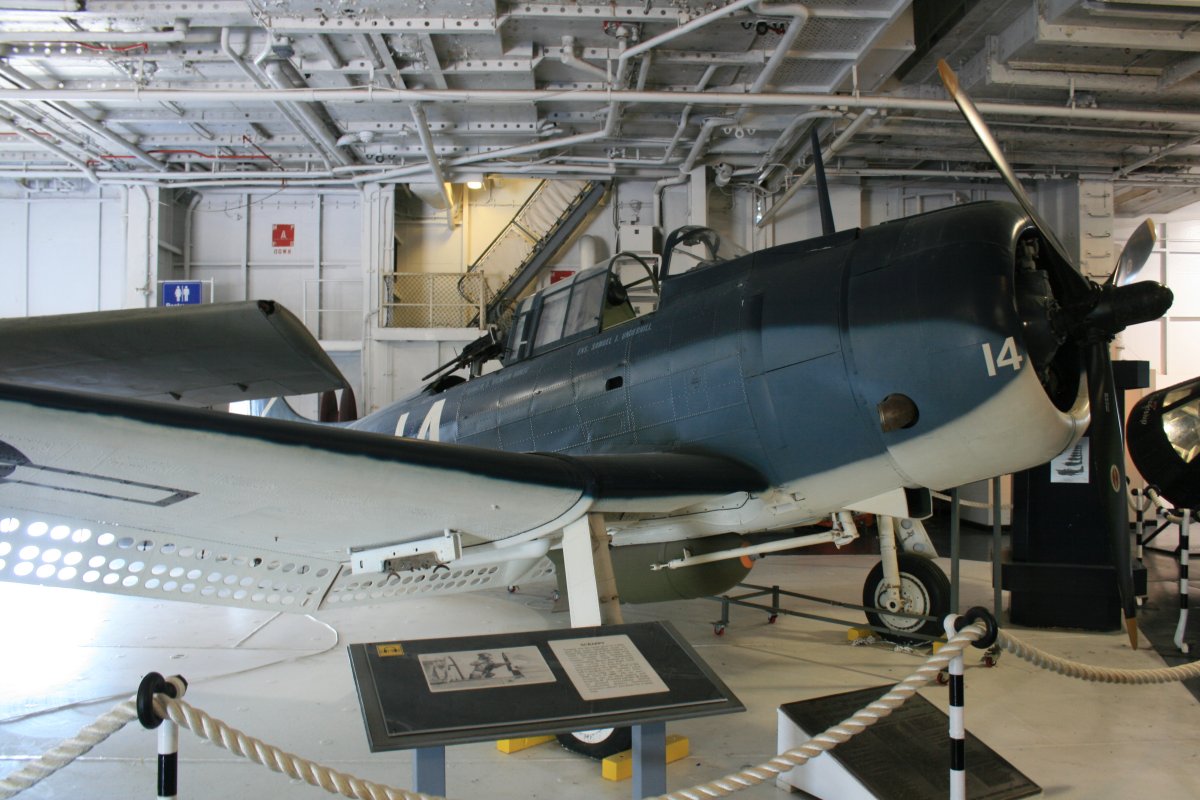 |
|
| A model of the US Navy's torpedo bomber early in the war: the Douglas TBD Devastator. Three squadrons were almost completely wiped out at Midway and the airplane was quickly replaced by the TBM Avenger. None exist today although I think they have discovered at least one underwater wrecks. |
| |
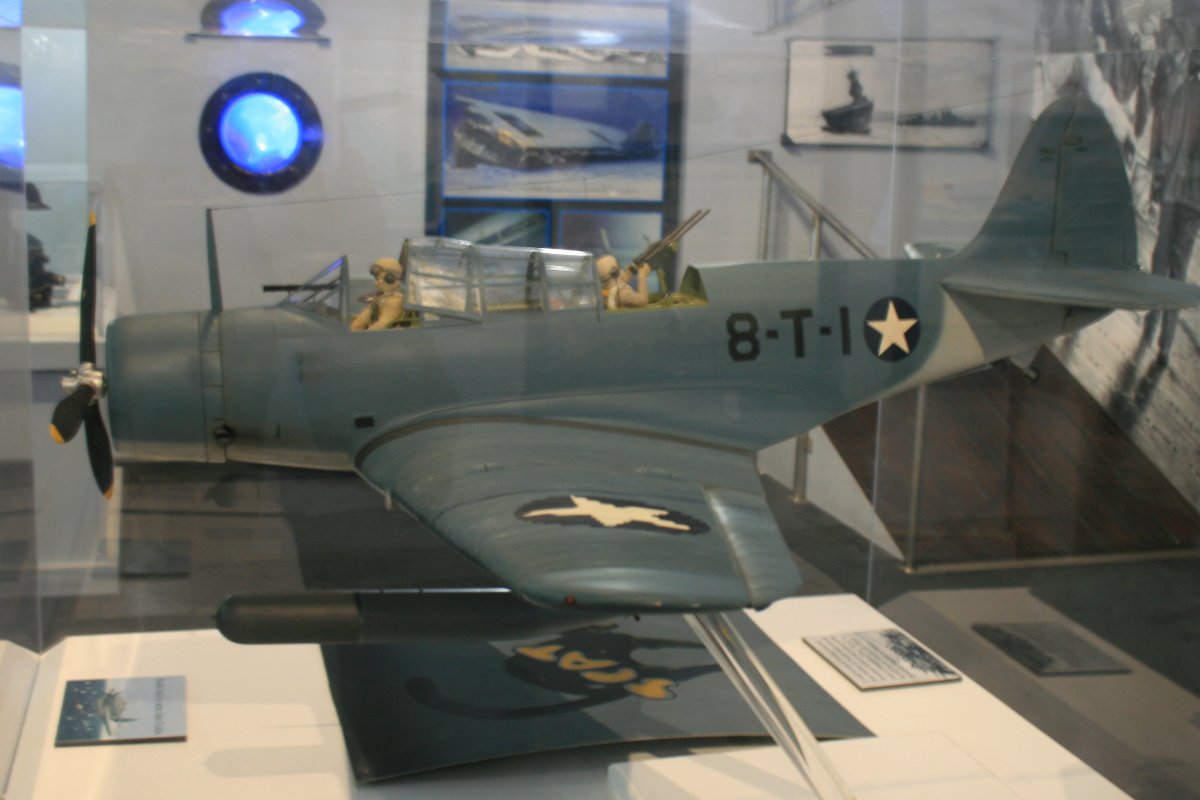 |
|
|
A blurry shot of the great fighter that replaced the Wildcat: the Grumman F6F Hellcat.
|
| |
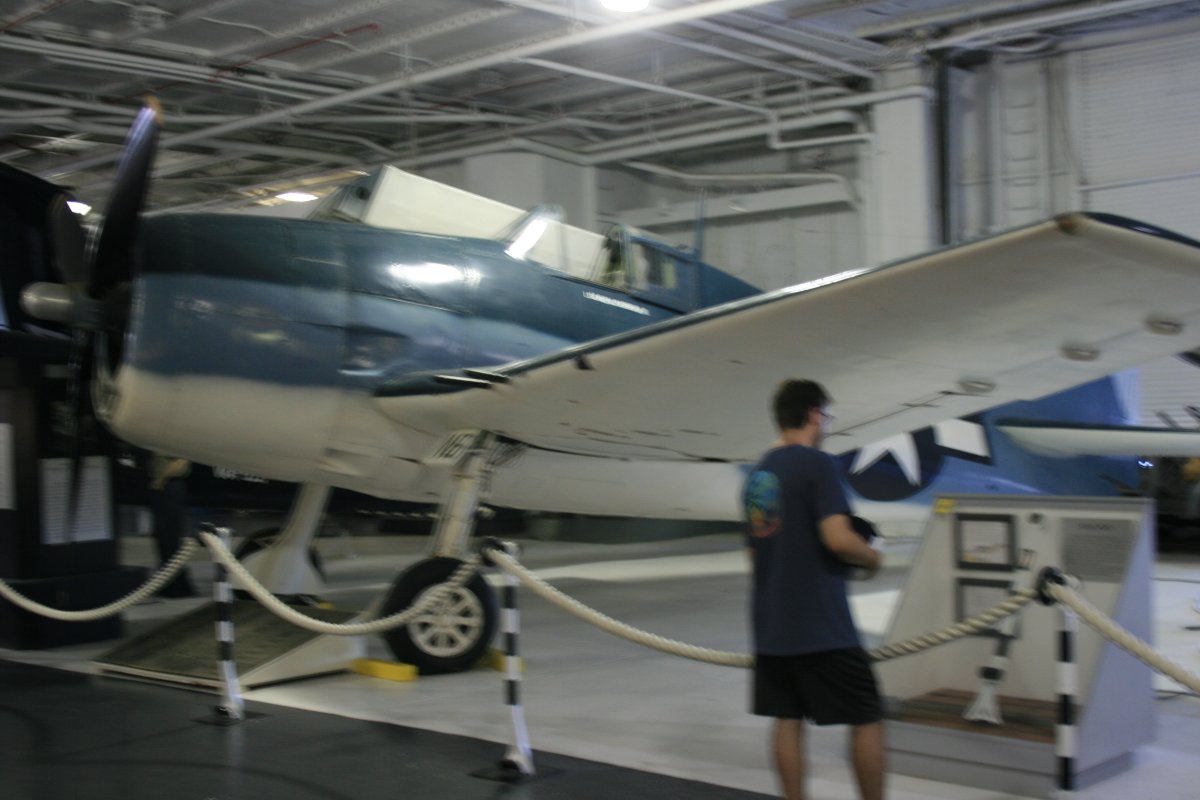 |
|
| The F4U Corsair. |
| |
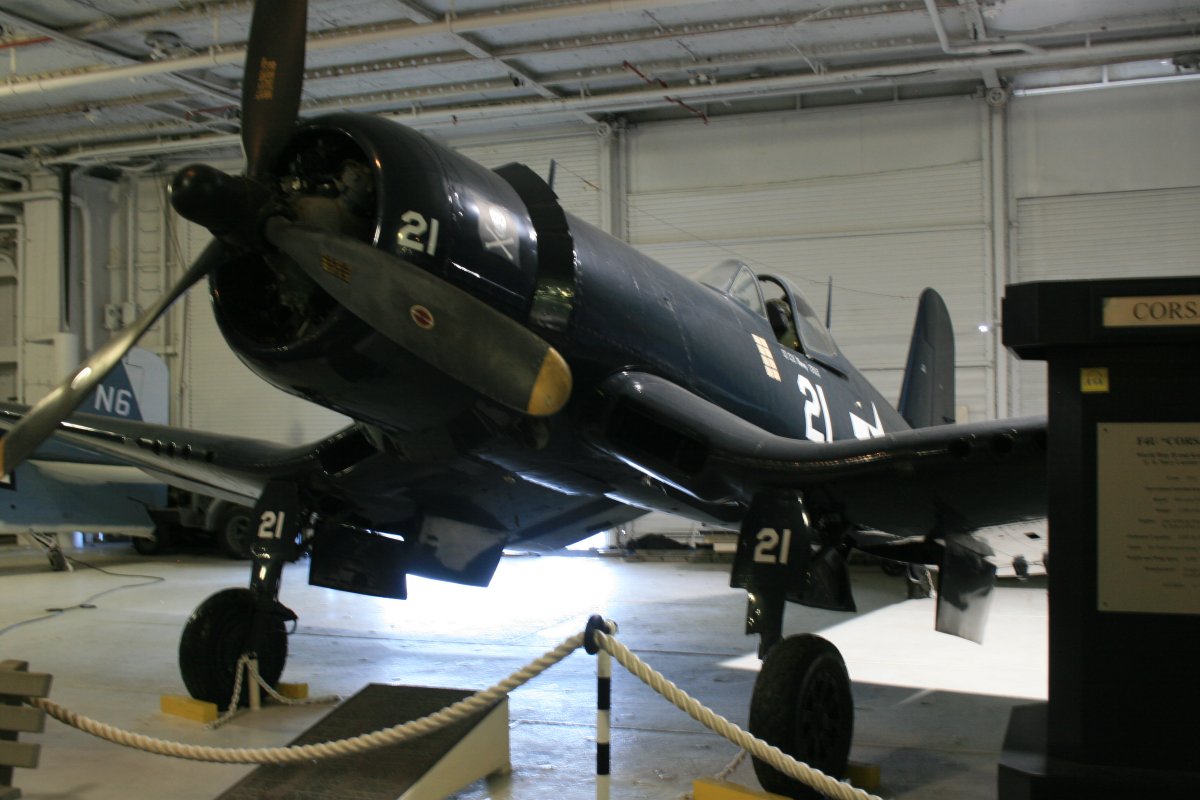 |
|
|
That red and white object is one of the Yorktown's four propeller shafts.
|
| |
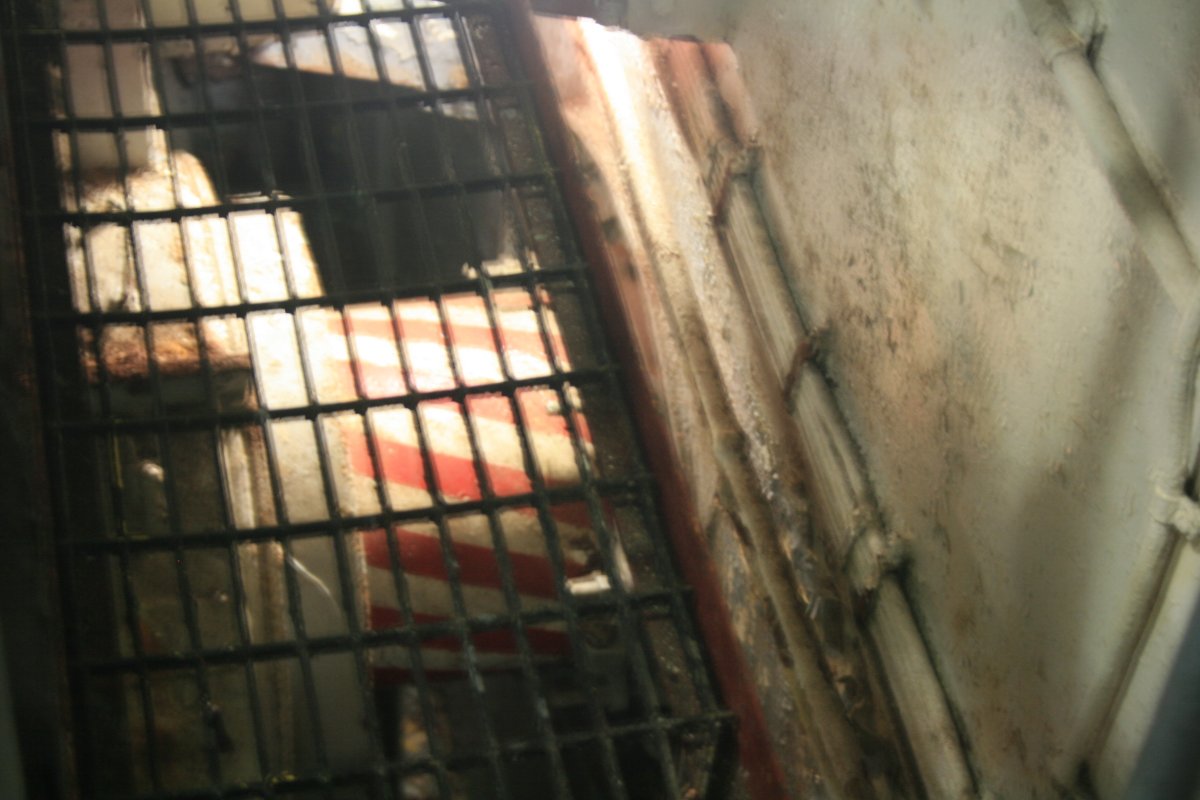 |
|
| This fascinating model is of the USS Franklin (CV-13) after a skillful Japanese bomber pilot hit her with two bombs. Because there there were fueled and armed planes on the flight deck, the damage was catastrophic. Over 800 men were killed. The remaining crew members managed to save the ship, somehow. |
| |
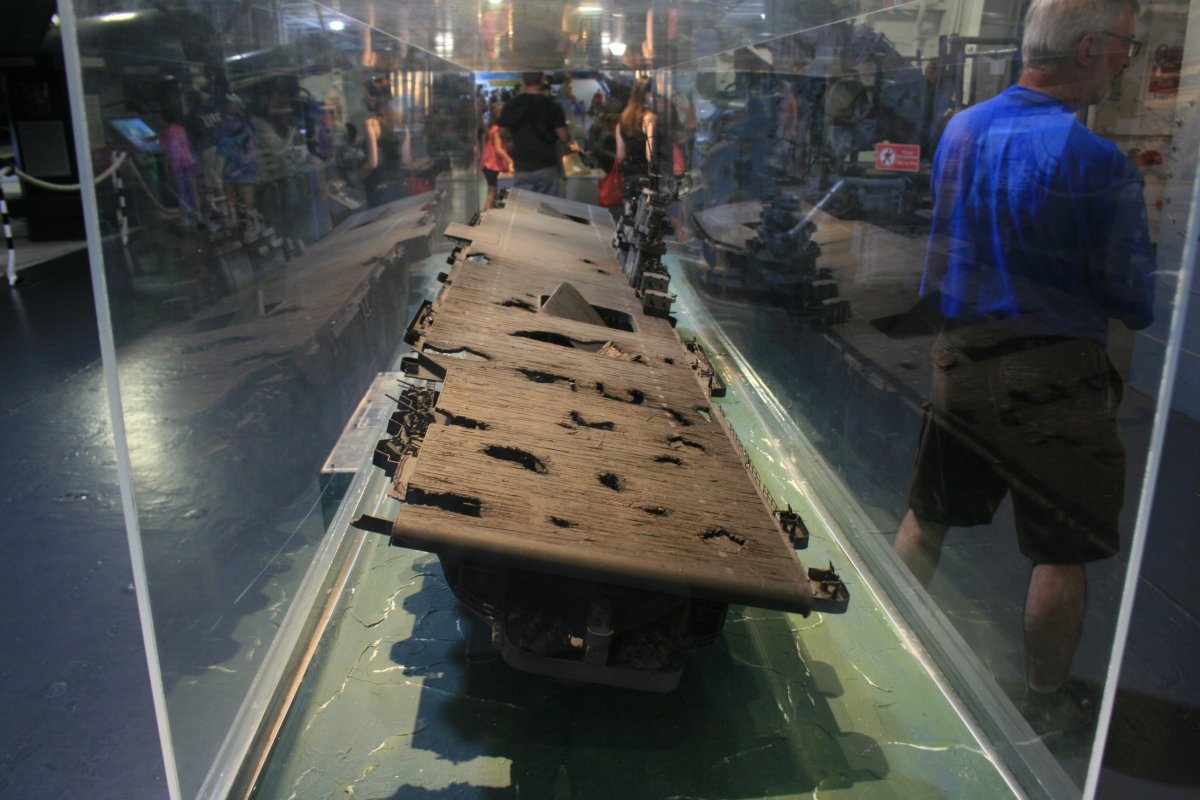 |
|
| A model of the smaller Independance-class "Light" carrier used in WWII. President George H.W. Bush flew TBM Avengers off this type carrier. |
| |
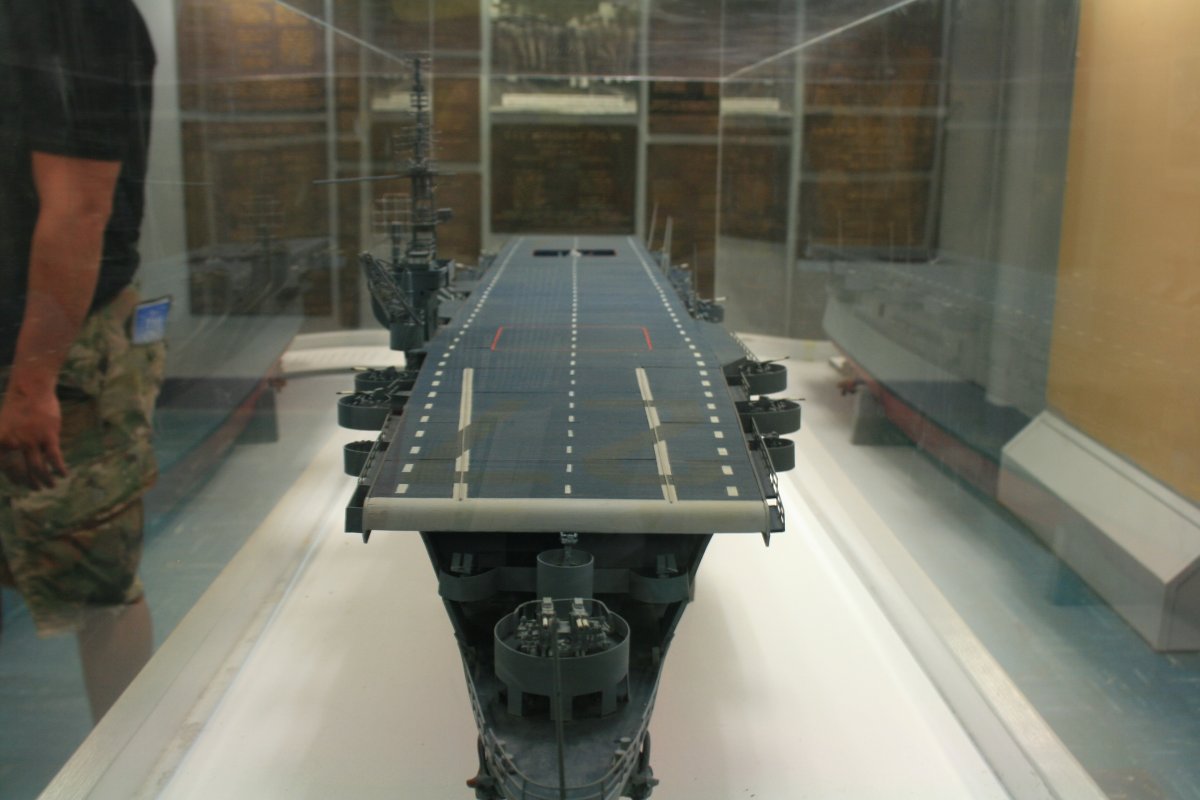 |
|
| A model of an Escort or "Jeep" carrier. |
| |
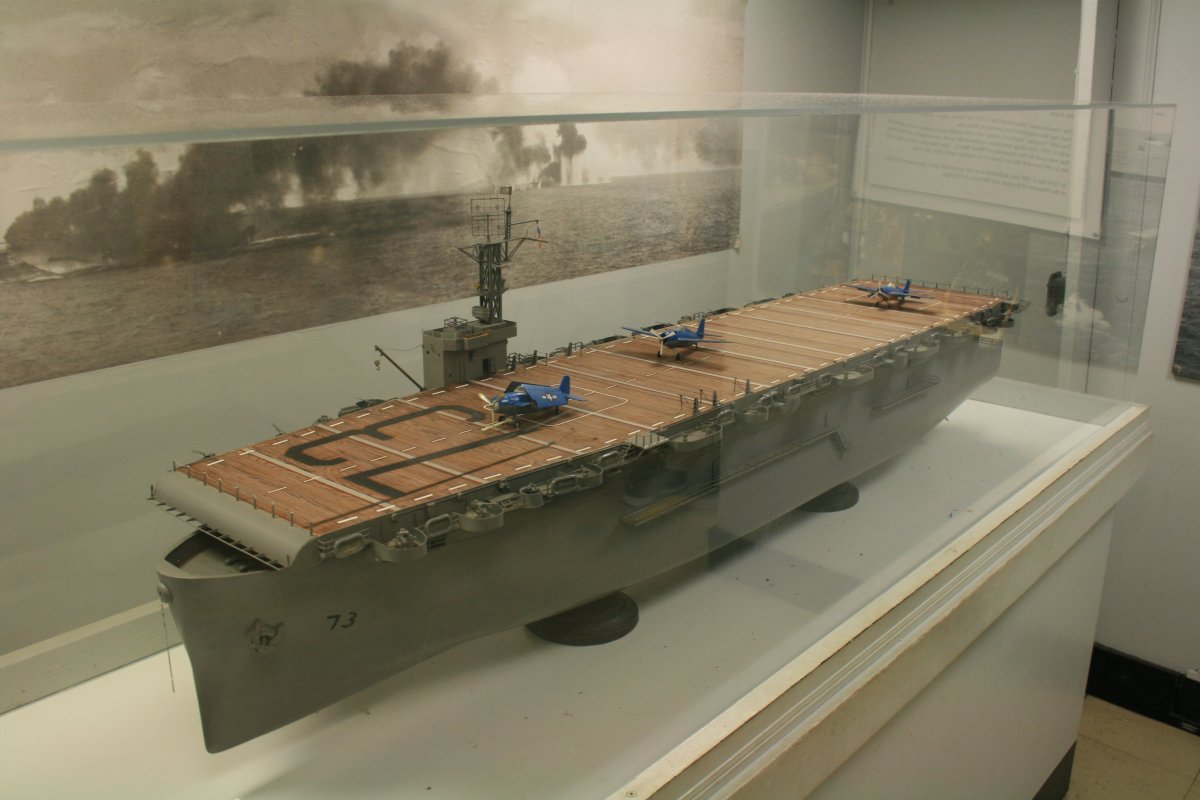 |
|
|
A neat diorama of Japanese battleships and cruisers catching a squadron of Jeep carriers at Leyte Gulf.
|
| |
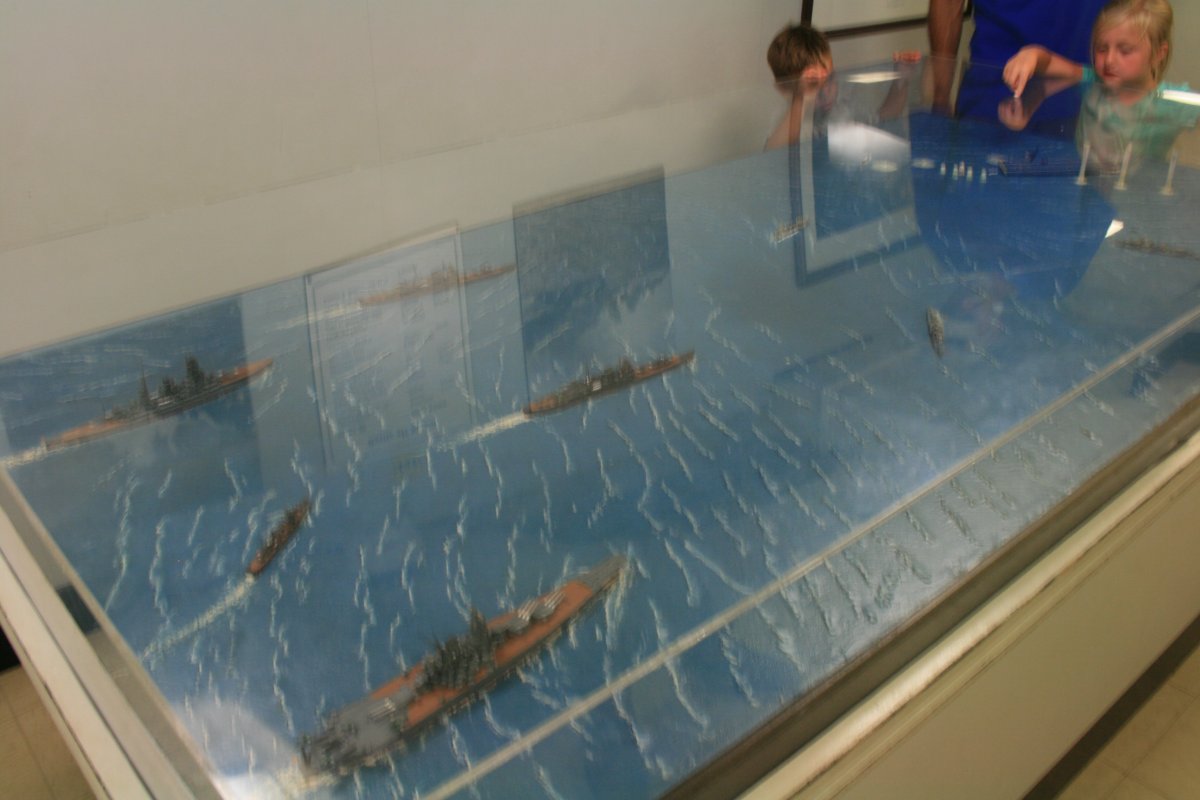 |
|
|
Speaking of Japanese battleships, here is an awesome model of the biggest: the Yamato. It featured nine 18-inch guns.
|
| |
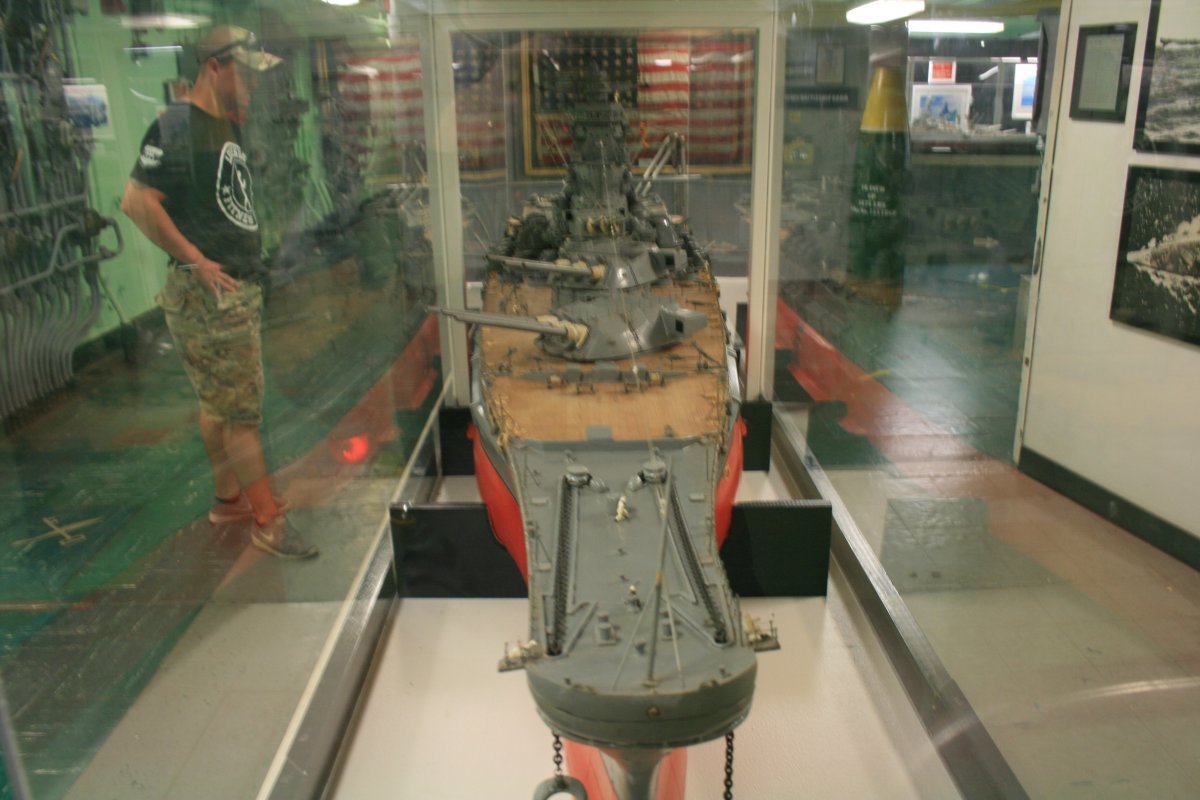 |
|
| The Yamato's stern. |
| |
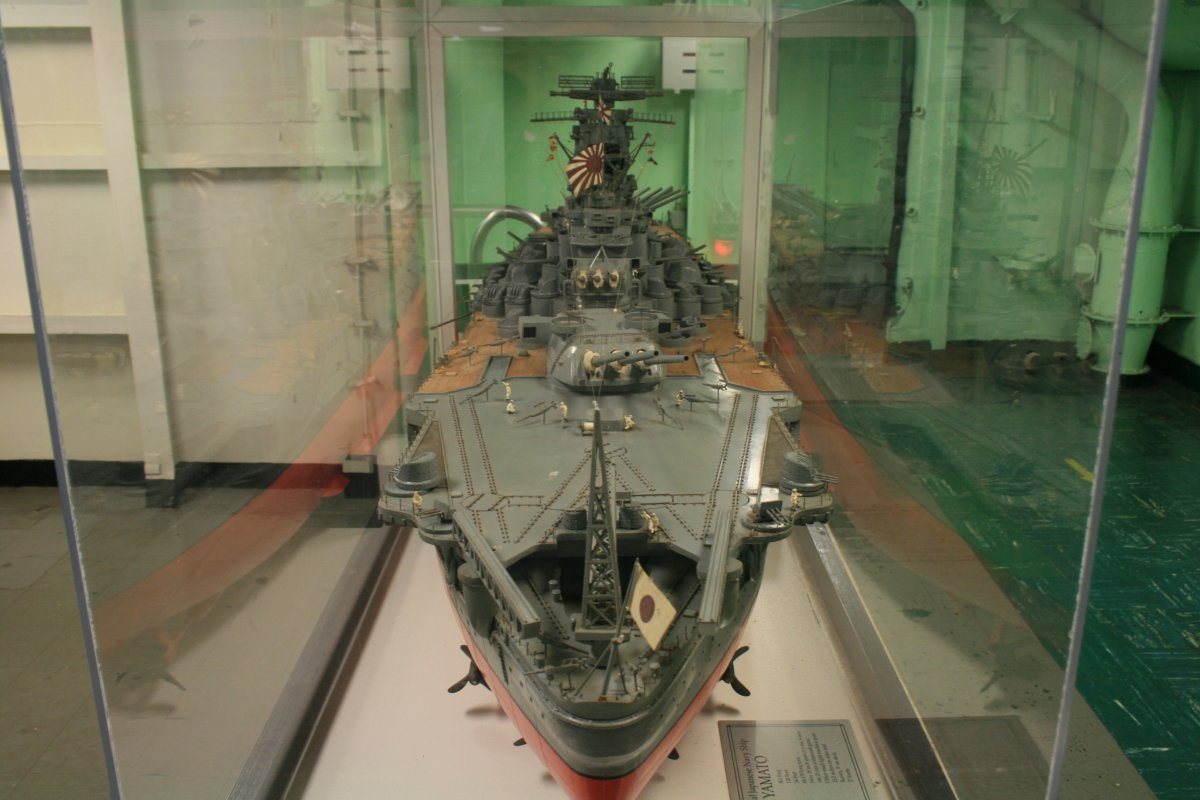 |
|
| A model of an Essex-class carrier like the Yorktown. That massive red and white striped propeller shaft you saw earlier. This is what they look like on the outside of the ship. |
| |
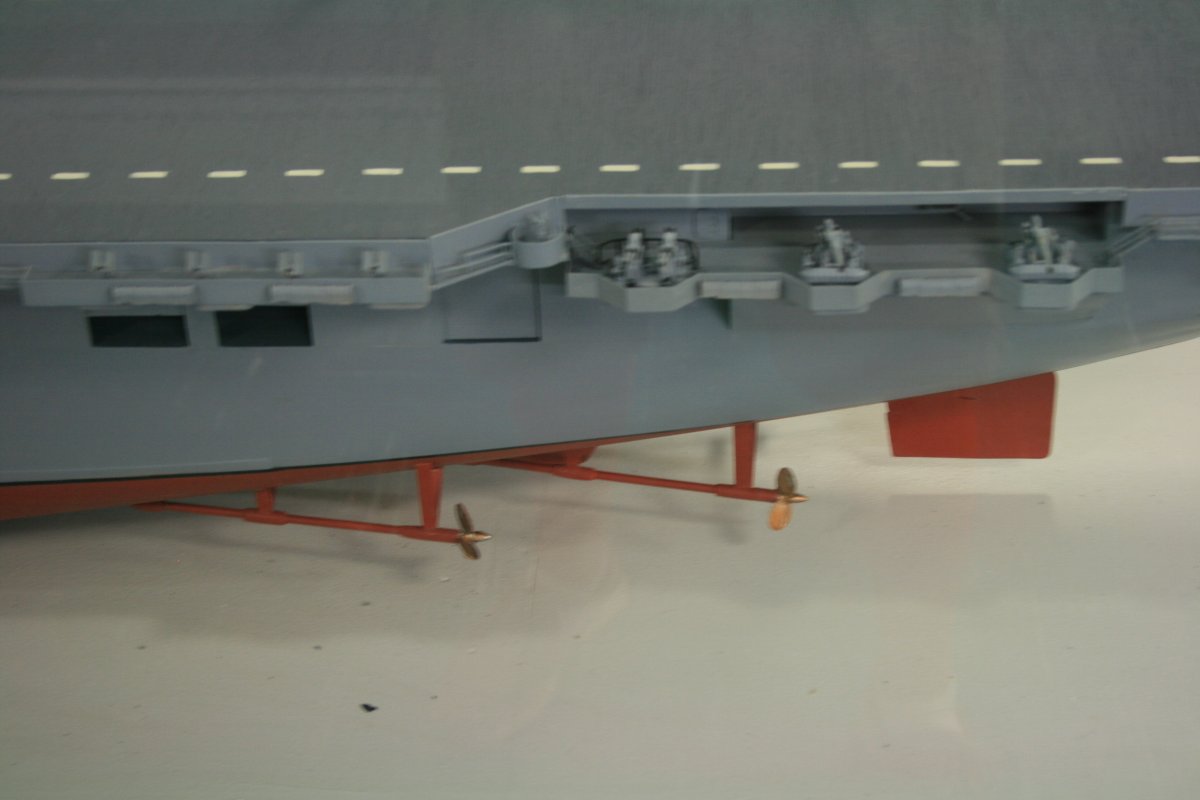 |
|
| A neat model of the Japanese aircraft carrier Akagi, sunk at Midway. It's interesting how the flight deck slopes down on each side from the center. |
| |
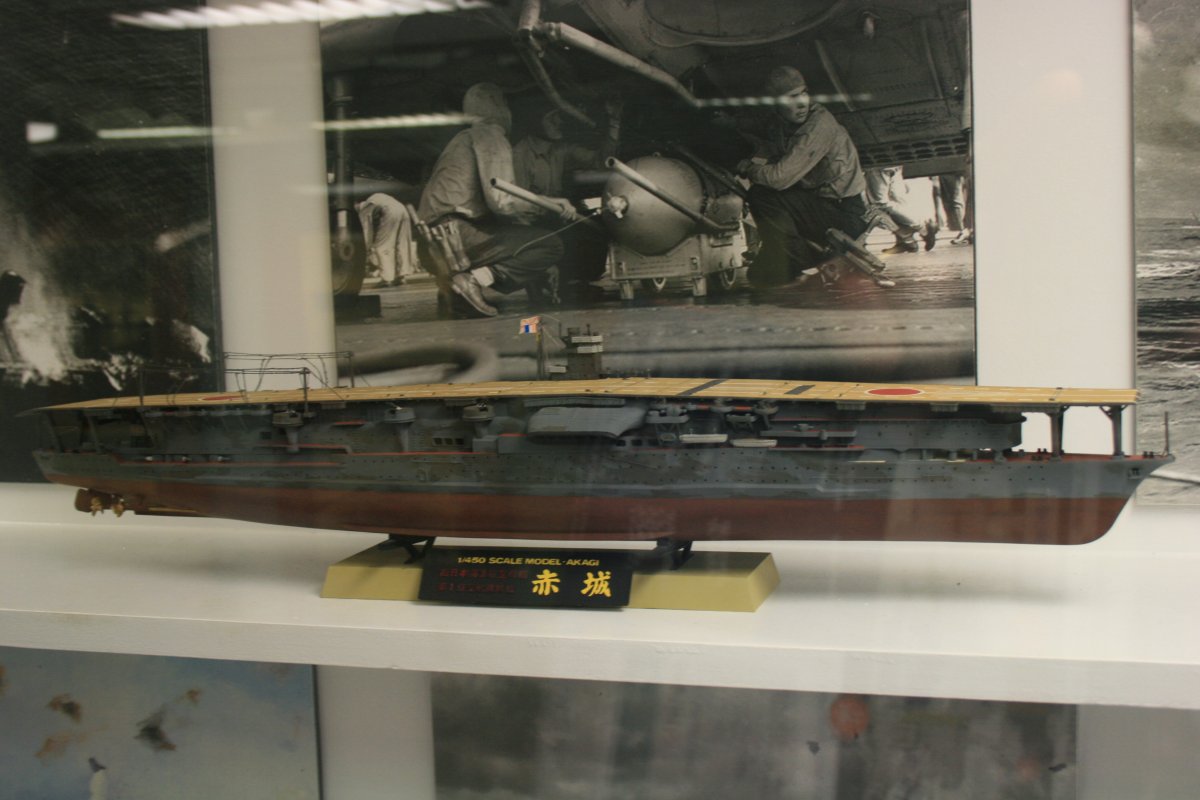 |
|
|
There was a Battleship area. Here is a model of probably the best all-around battleship ever: the American Iowa-class, of which four were built.
|
| |
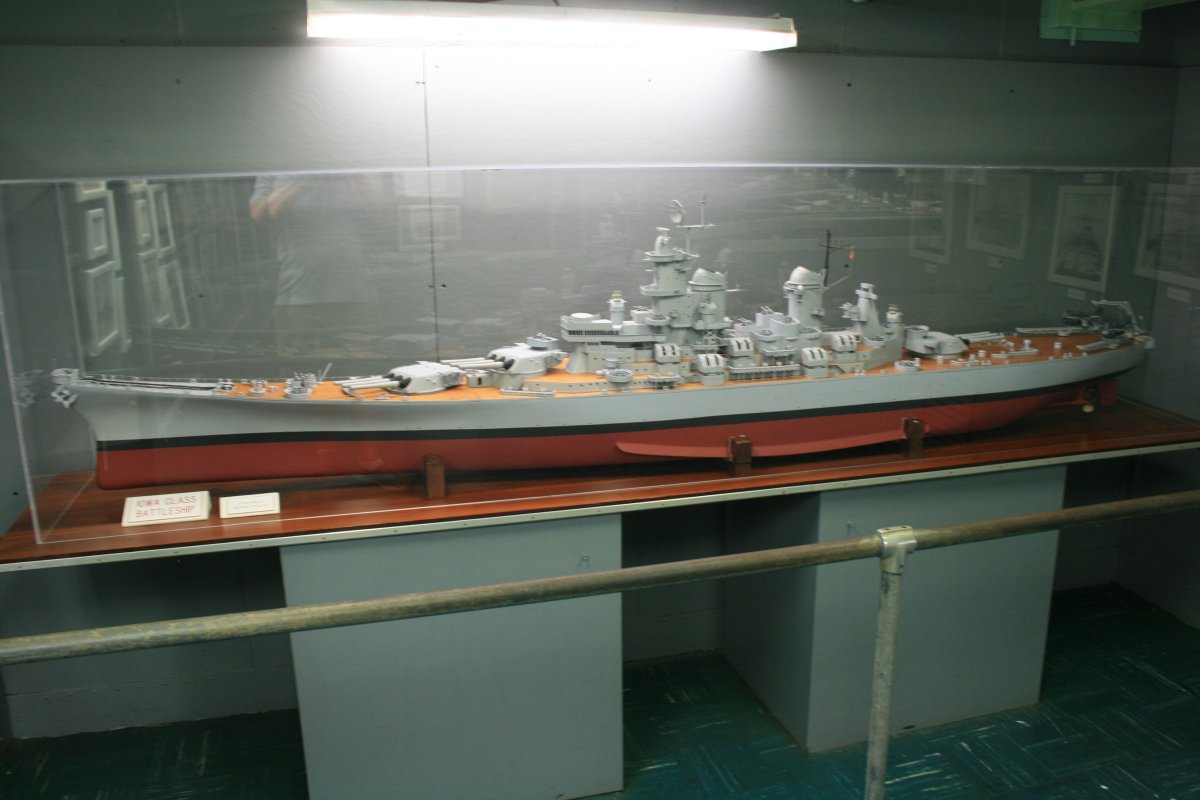 |
|
| The North Carolina-class battleship. The first of two, the North Carolina was the first newly constructed American battleship to enter service during World War II. The North Carolina is now a museum ship in Wilmington, NC. The second battleship of the class, the USS Washington actually fought in a night battle against a Japanese battleship off Guadalcanal. |
| |
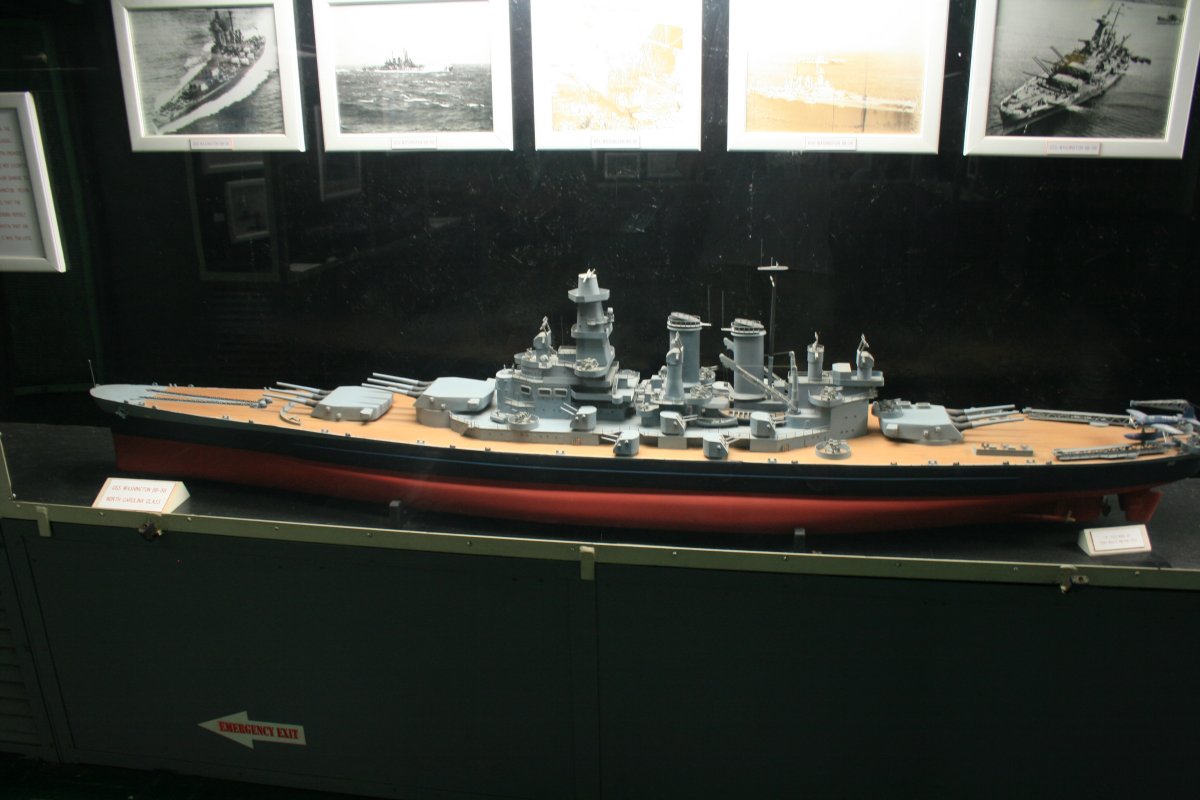 |
|
|
The Arizona.
|
| |
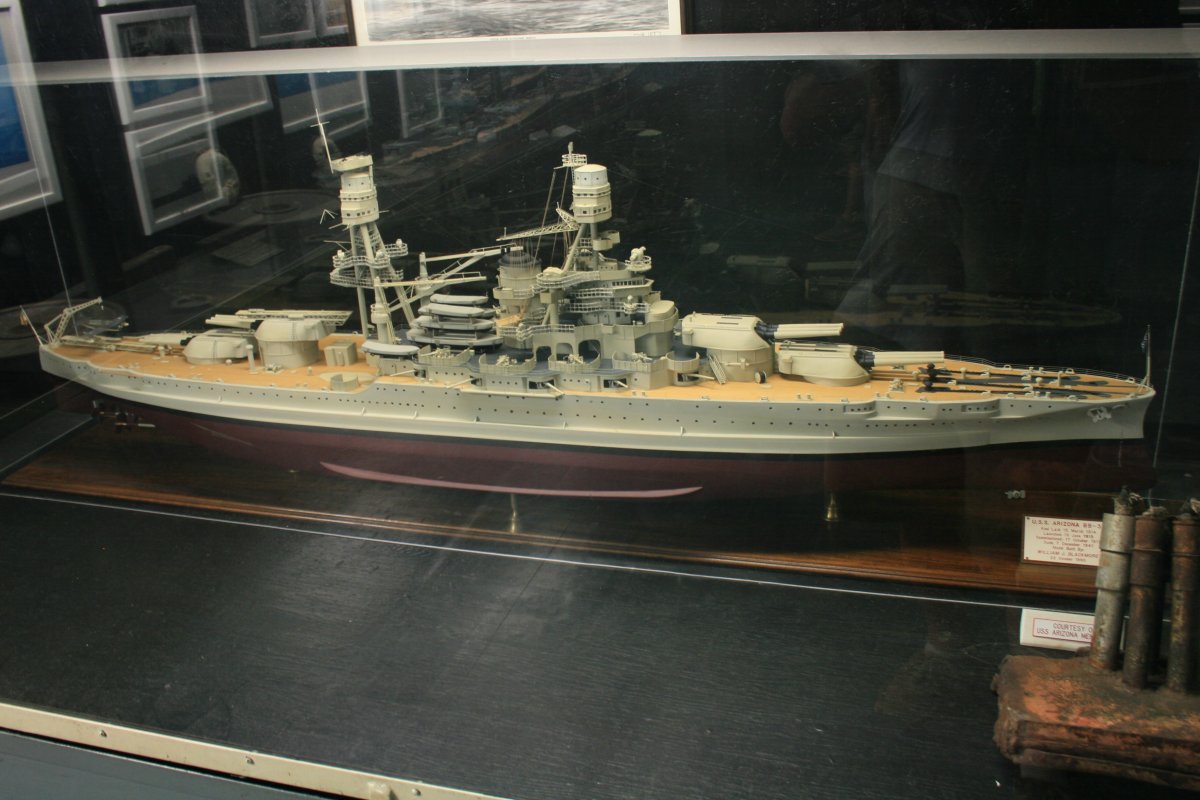 |
|
| A diorama showing Battleship row at Pearl Harbor, December 7, 1941. |
| |
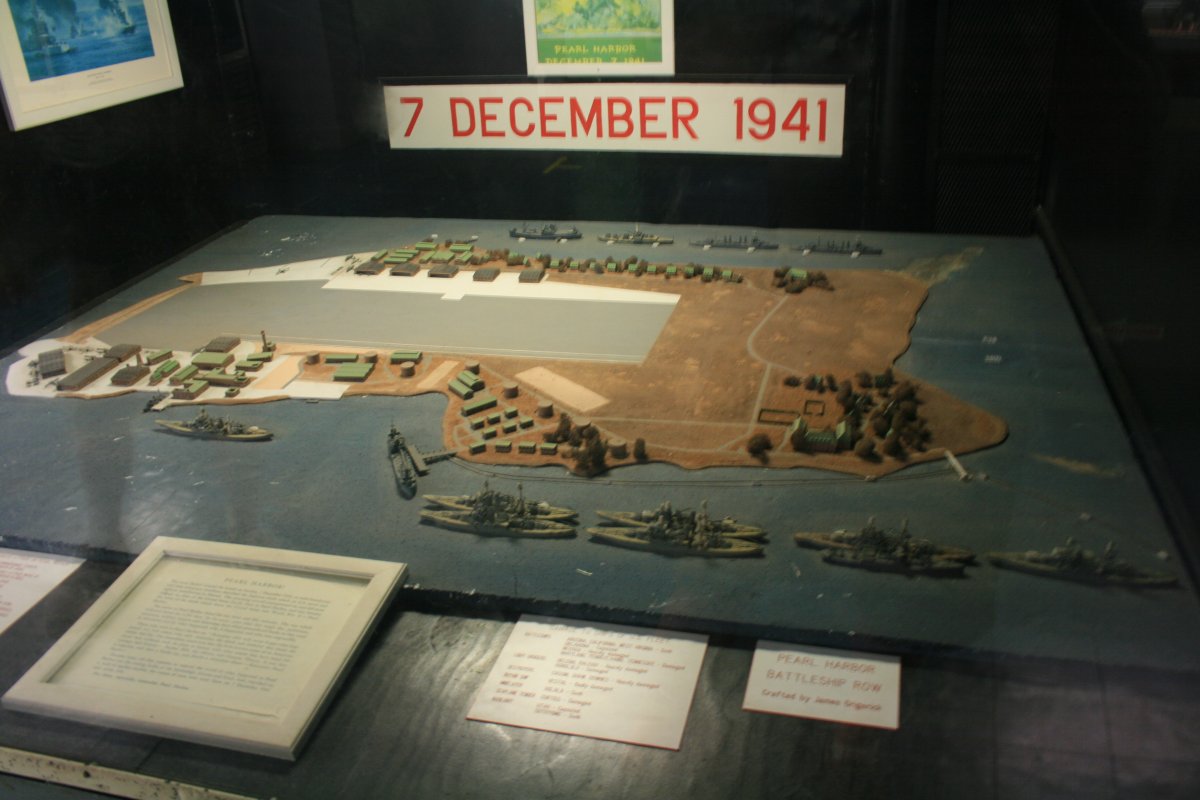 |
|
| Another area was for Cruisers. The one in the foreground is the Northhampton class. |
| |
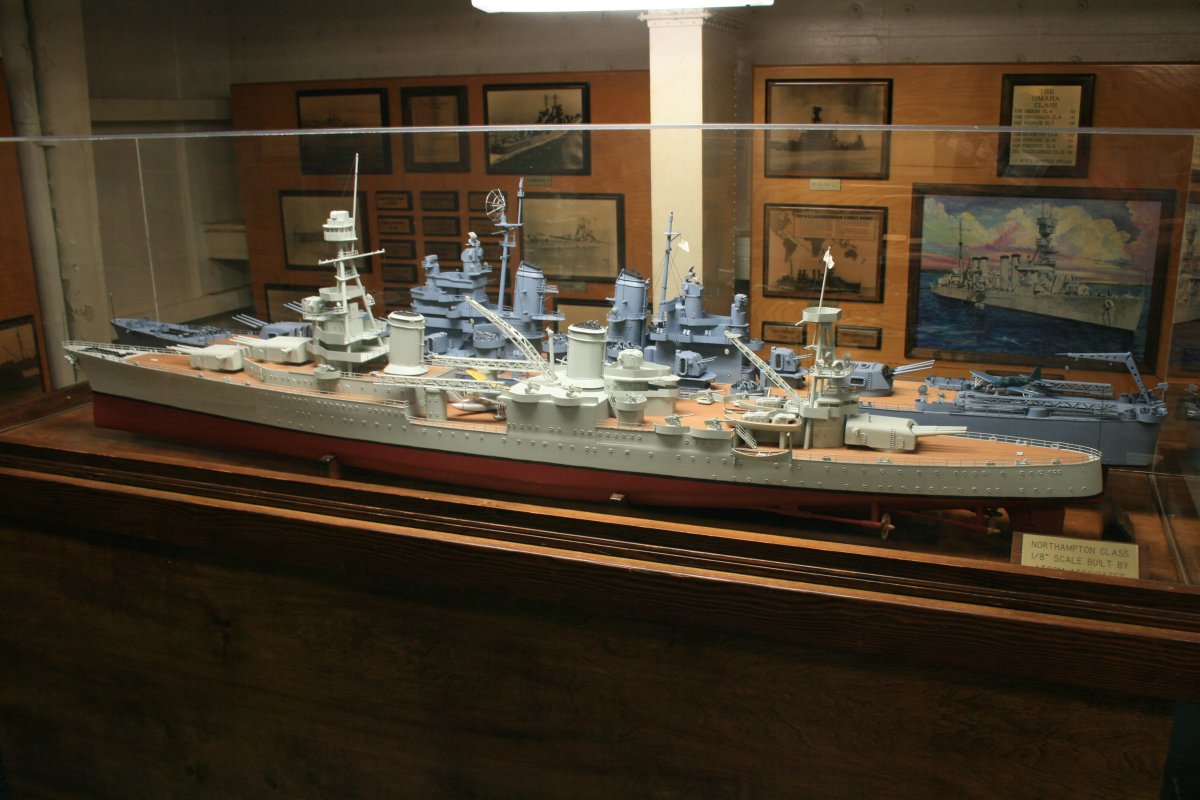 |
|
| And on the other side is the Baltimore-class. |
| |
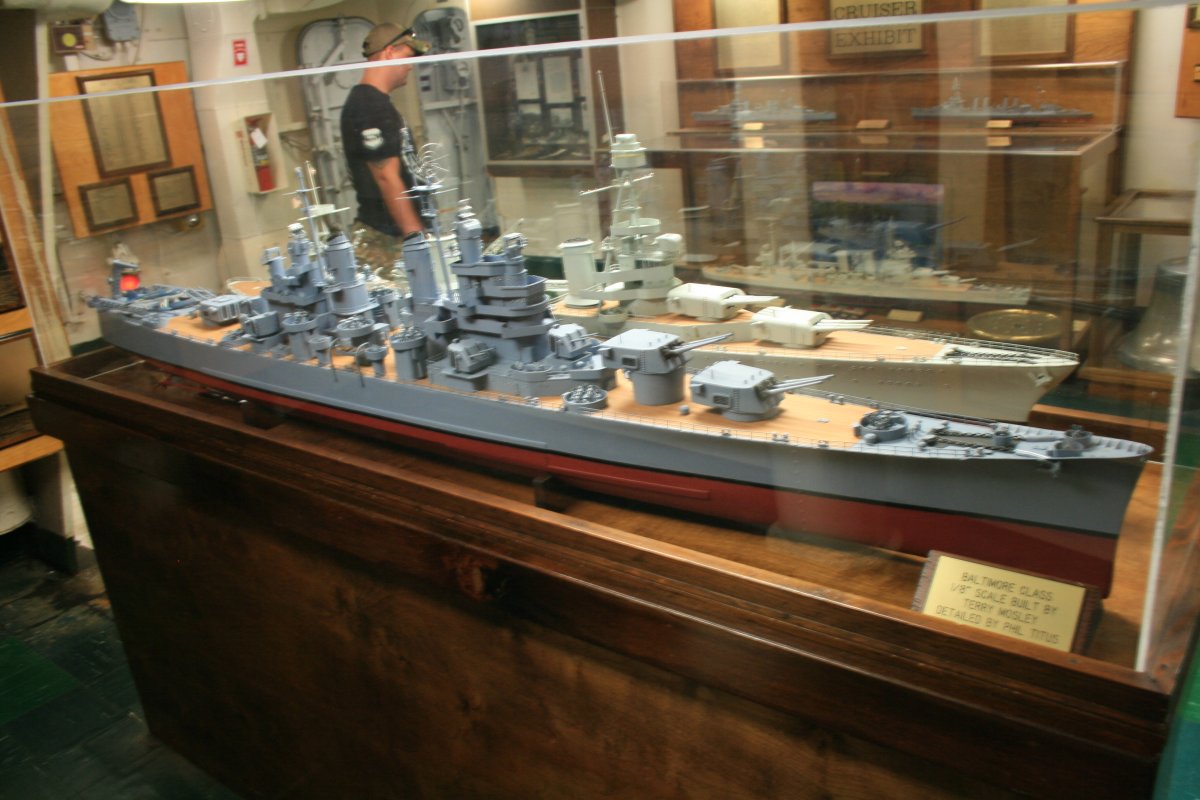 |
|
|
The Atlanta-class anti-aircraft cruiser. It's main armament consisted of five twin 5-inch gun mounts.
|
| |
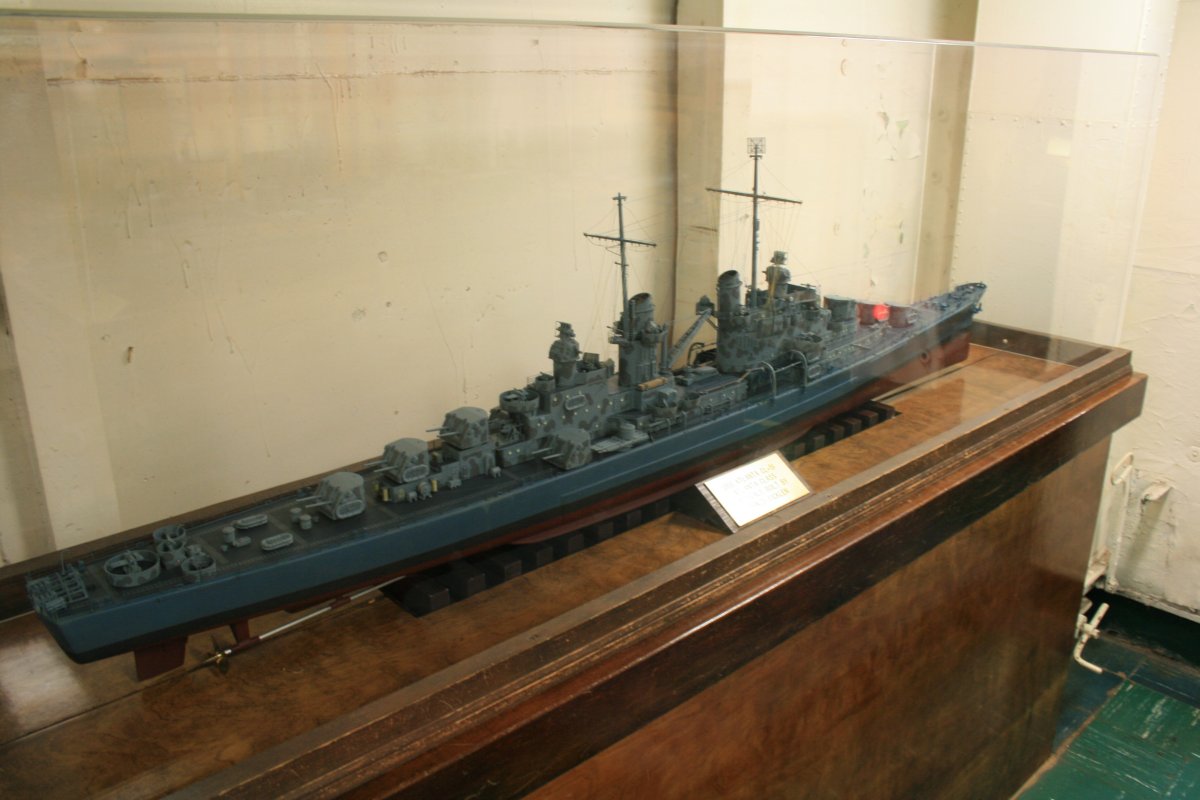 |
|
|
They even had a model of the seaplane my Dad flew: the Martin P-5M Marlin.
|
| |
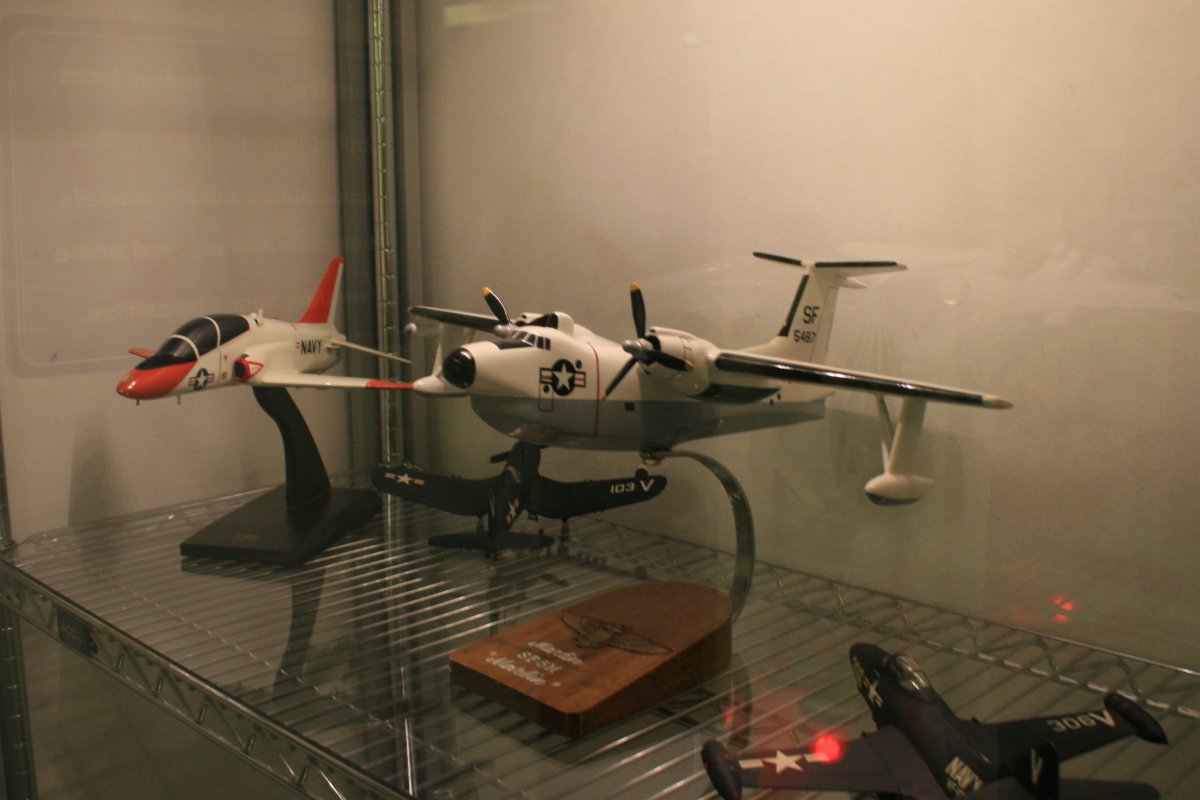 |
|
|
Back outside, it was time to check out the USS Laffey (DD-724): The Ship That Would Not Die. DD-724 was the second USS Laffey; the first USS Laffey (DD-459) was sunk in the First Naval Battle of Guadalcanl when a US force of cruisers and destroyers took on a Japanese force including two battleships in a ferocious night surface action. The Laffey DD-724) was a Sumner-class destroyer commissioned in February, 1944. It was hit by six kamikaze airplanes at the Battle of Okinawa -- 32 men were killed and 71 wounded -- and amazingly the crew saved the ship.
USS Laffey served until 1975 and at some point received the helicopter deck clearly visible here.
|
| |
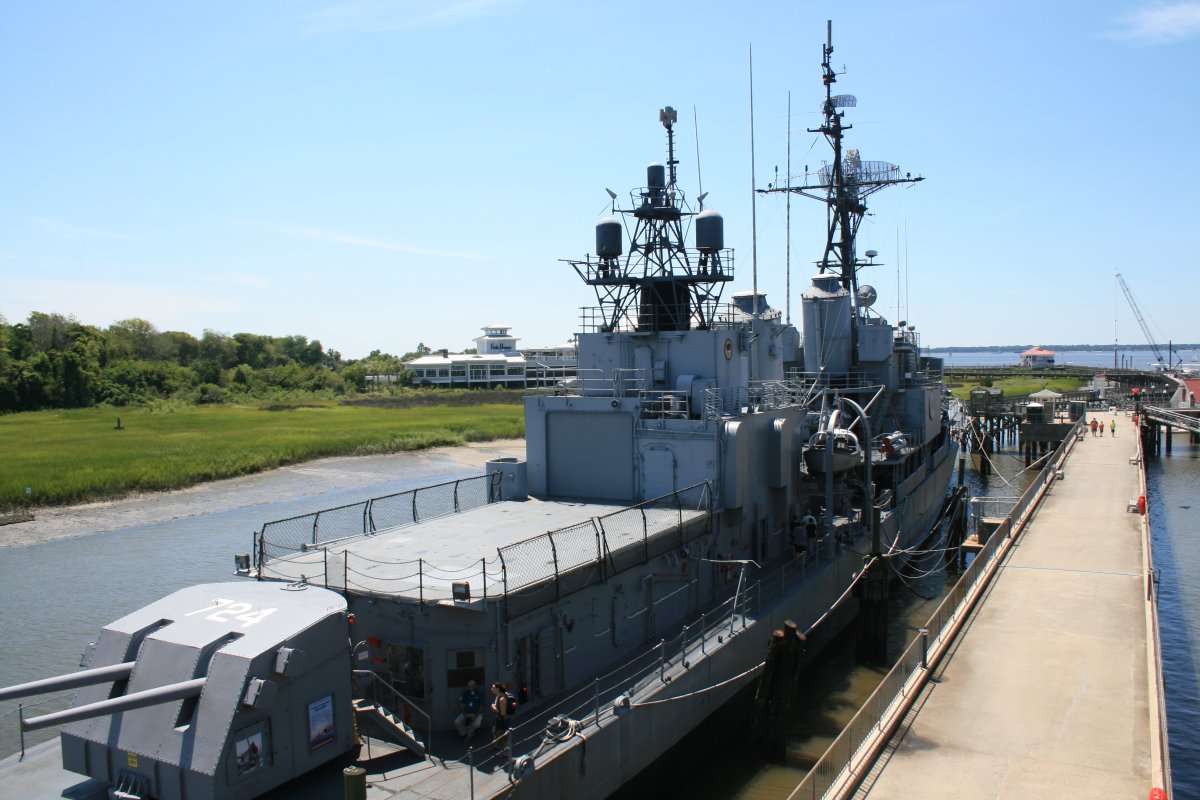 |
|
|
Two twin five-inch gun mounts up forward. They had a well done "experience" in one of the turrets, that simulated being in the gunmount during an air attack.
They also had an "experience" in the combat information center that simulated an encounter with a Soviet submarine during the Cold War.
|
| |
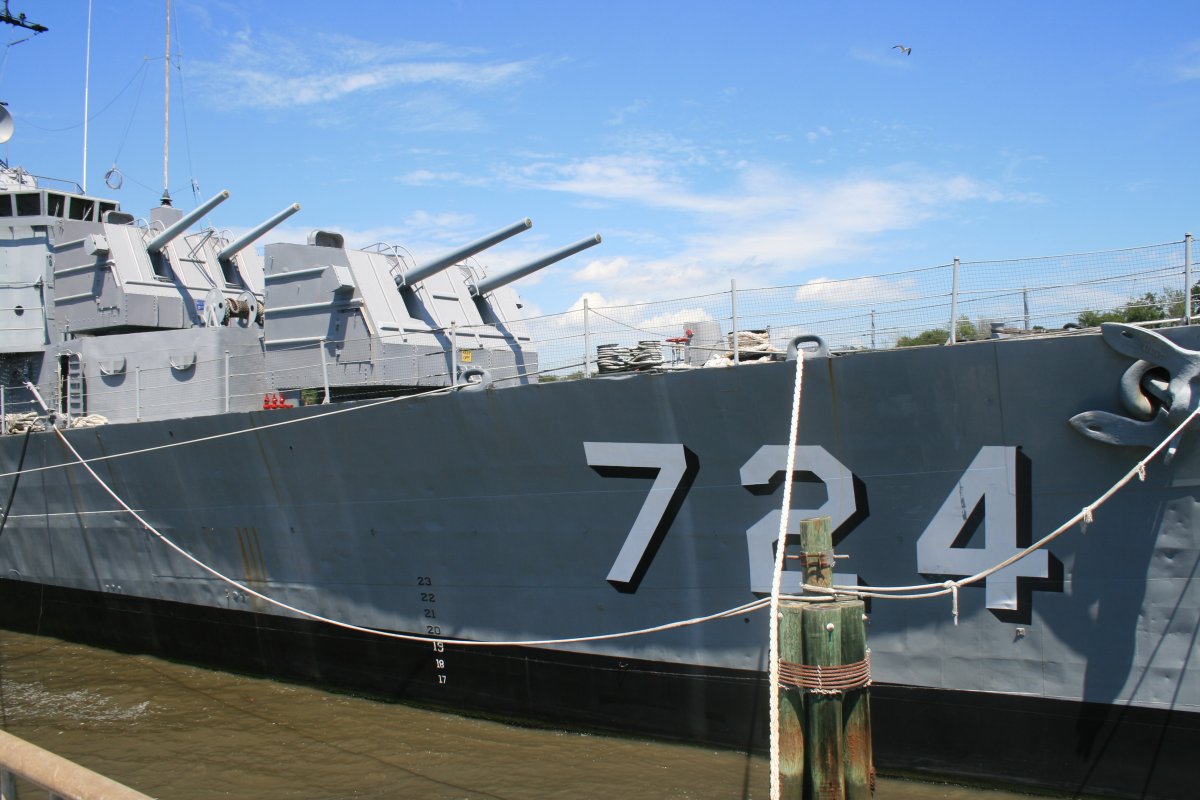 |
|
| The Yorktown's stern. |
| |
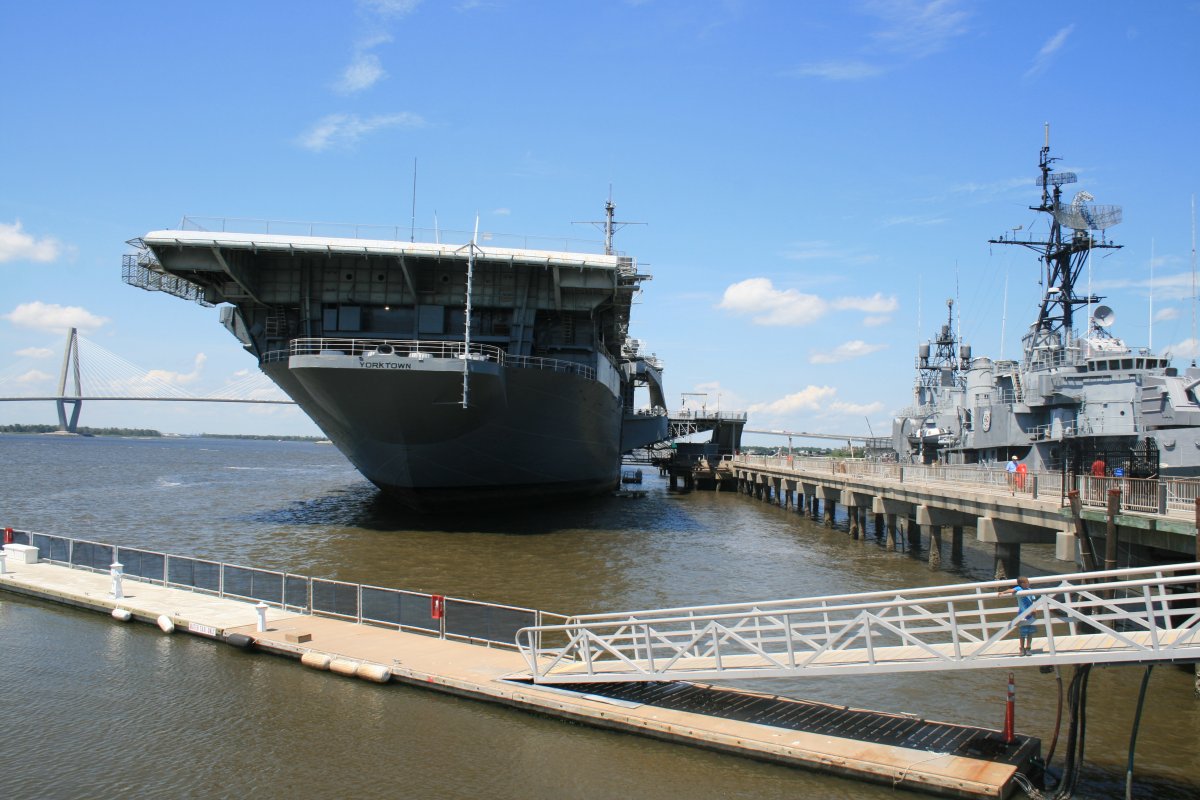 |
|
| We headed over to the diesel submarine USS Clagamore. |
| |
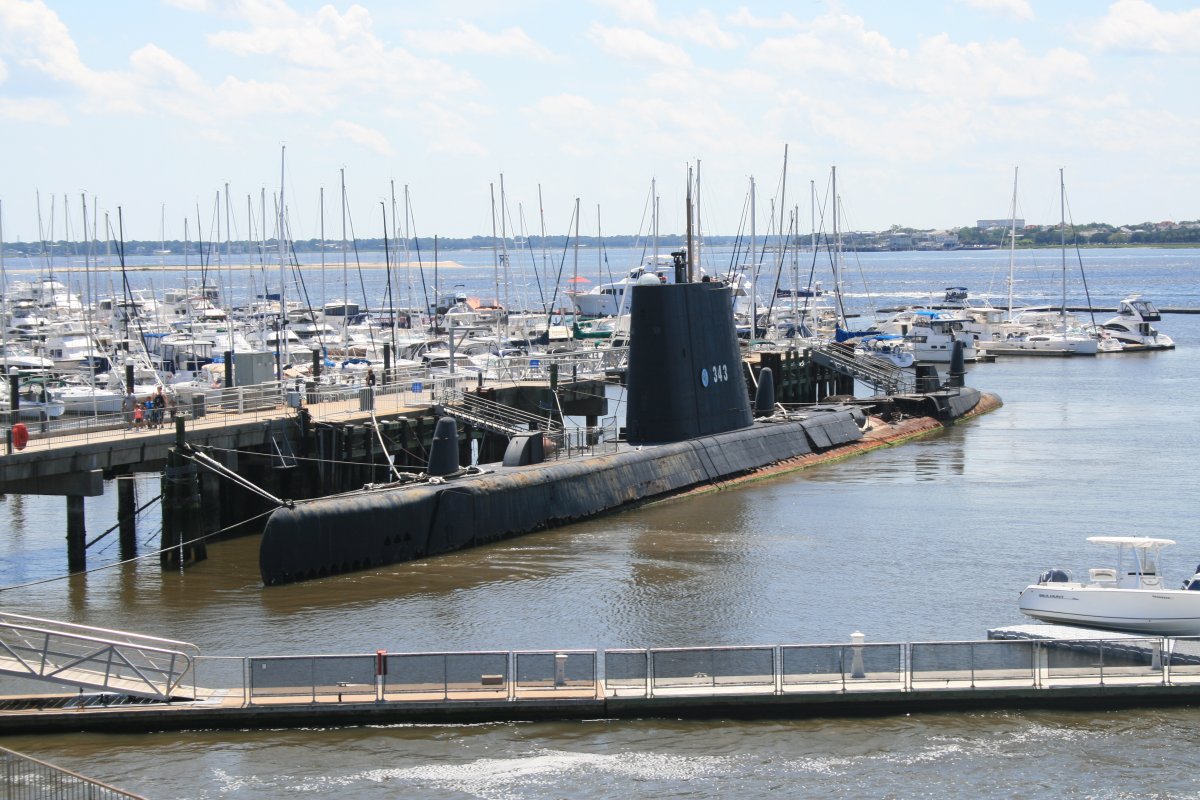 |
|
|
The Clagamore is in pretty bad shape. It's not going to be around much longer. They are going to tow it offshore later this year and sink it to form an artificial reef.
|
| |
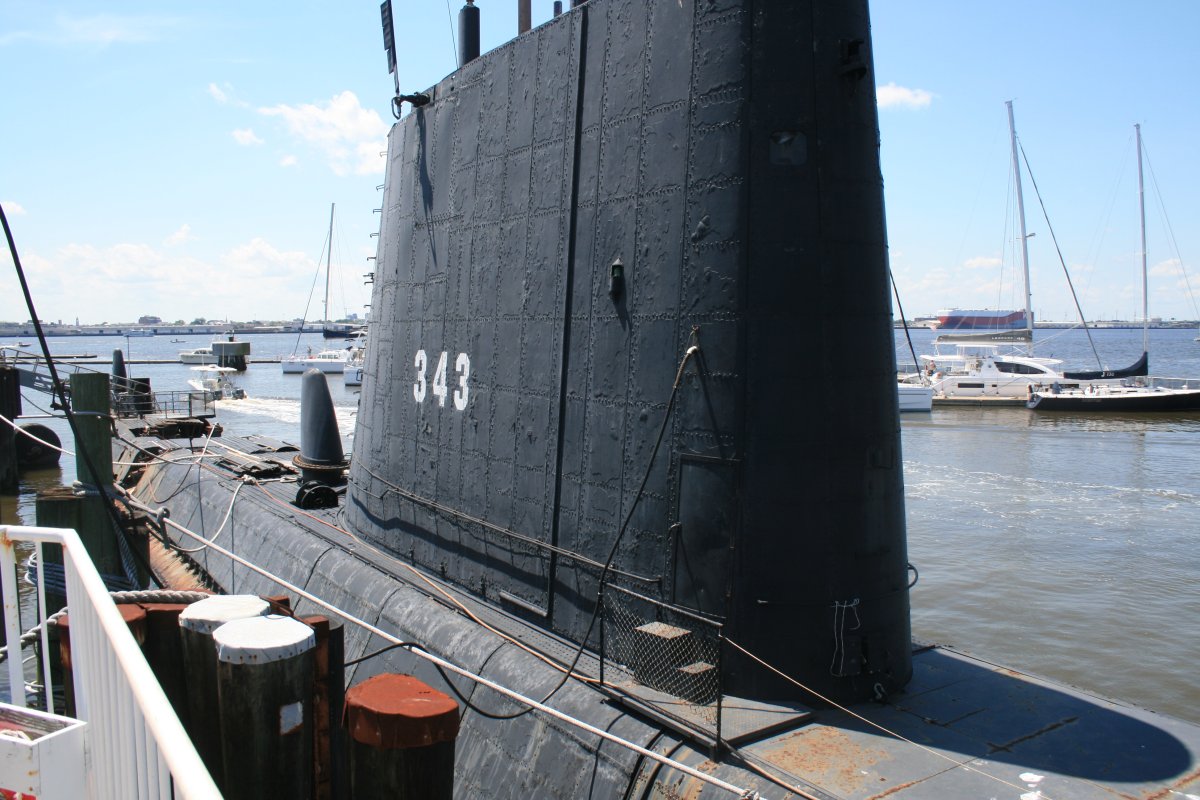 |
|
| William and Griffin about to descend into the submarine. |
| |
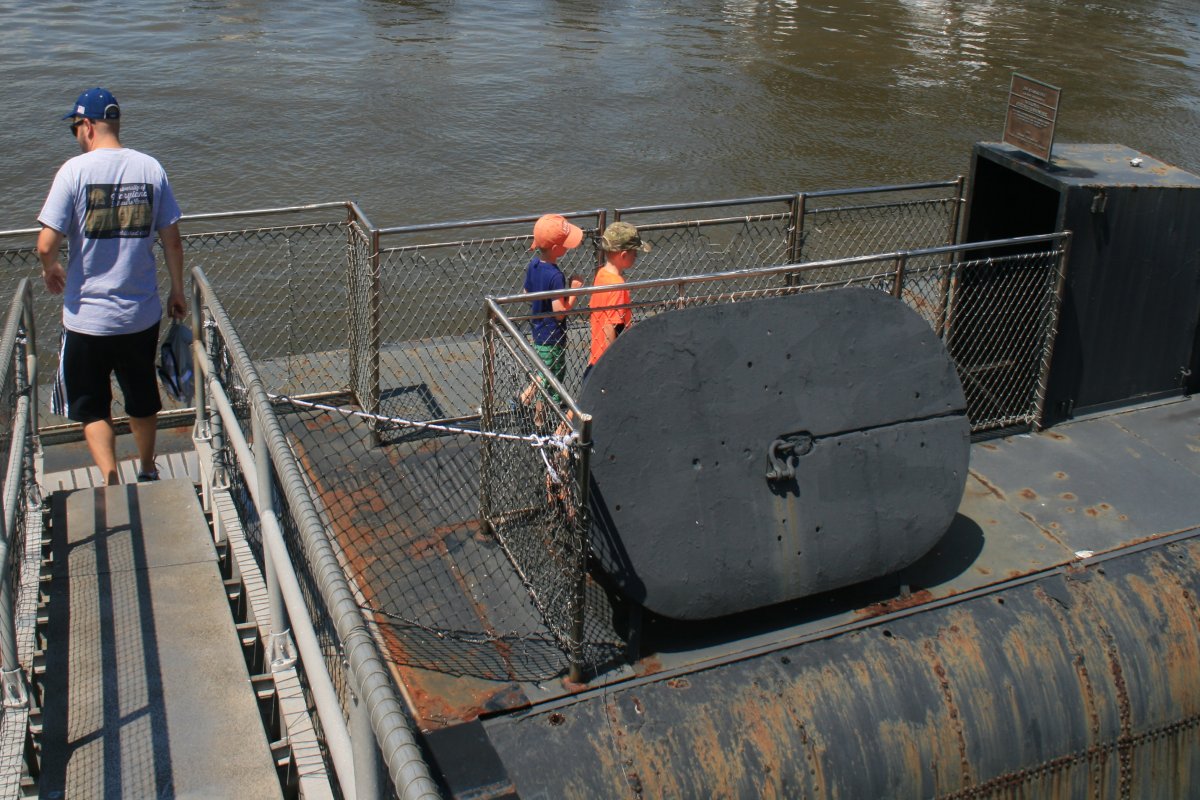 |
|
|
Like every other submarine museum ship I've been on, you walk through the tube and exit on the other end. There was no guide or anything, so you don't get a whole lot out of it, other than to wonder how people could serve in such a thing. As you can see, the aft end is in bad shape. But the fish should be happy with it.
|
| |
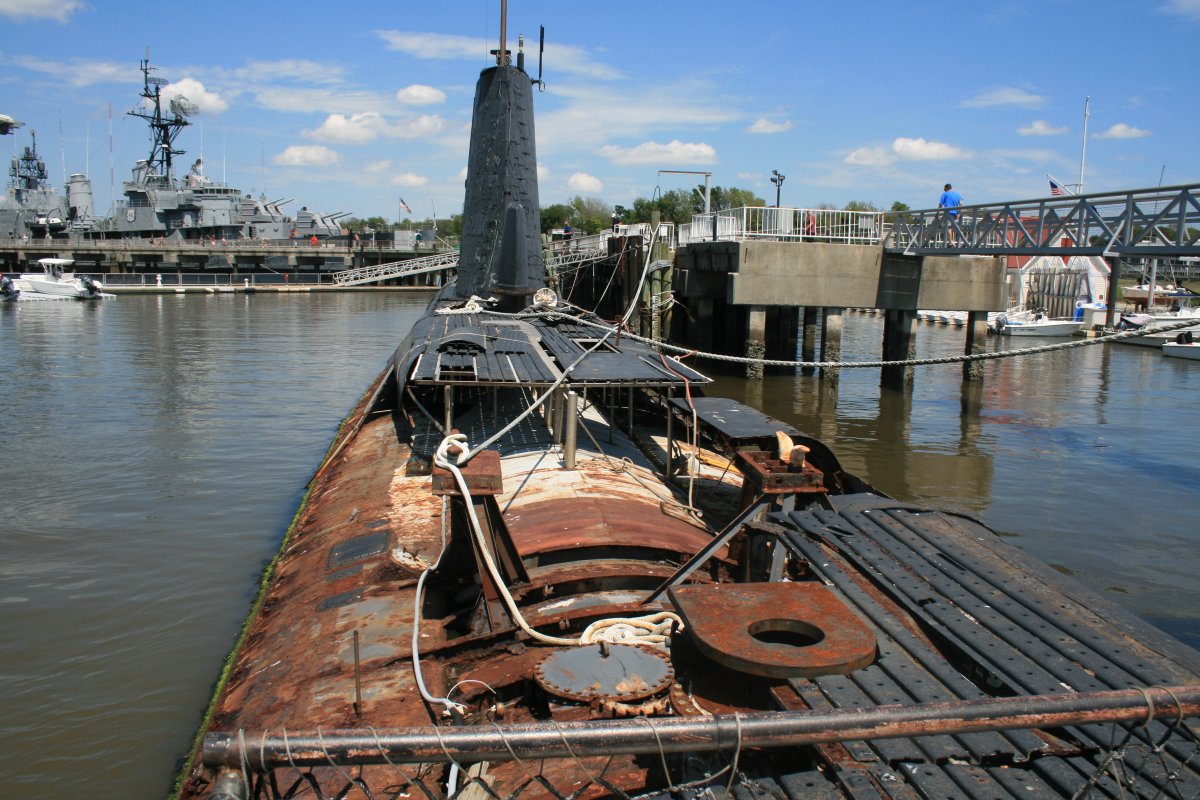 |
|
| Another final look at the Yorktown. Overall, we had an enjoyable day at Patriot's Point. It's a must see if you are in the Charleston area. They have really done a lot of good things to it since I last saw it. |
| |
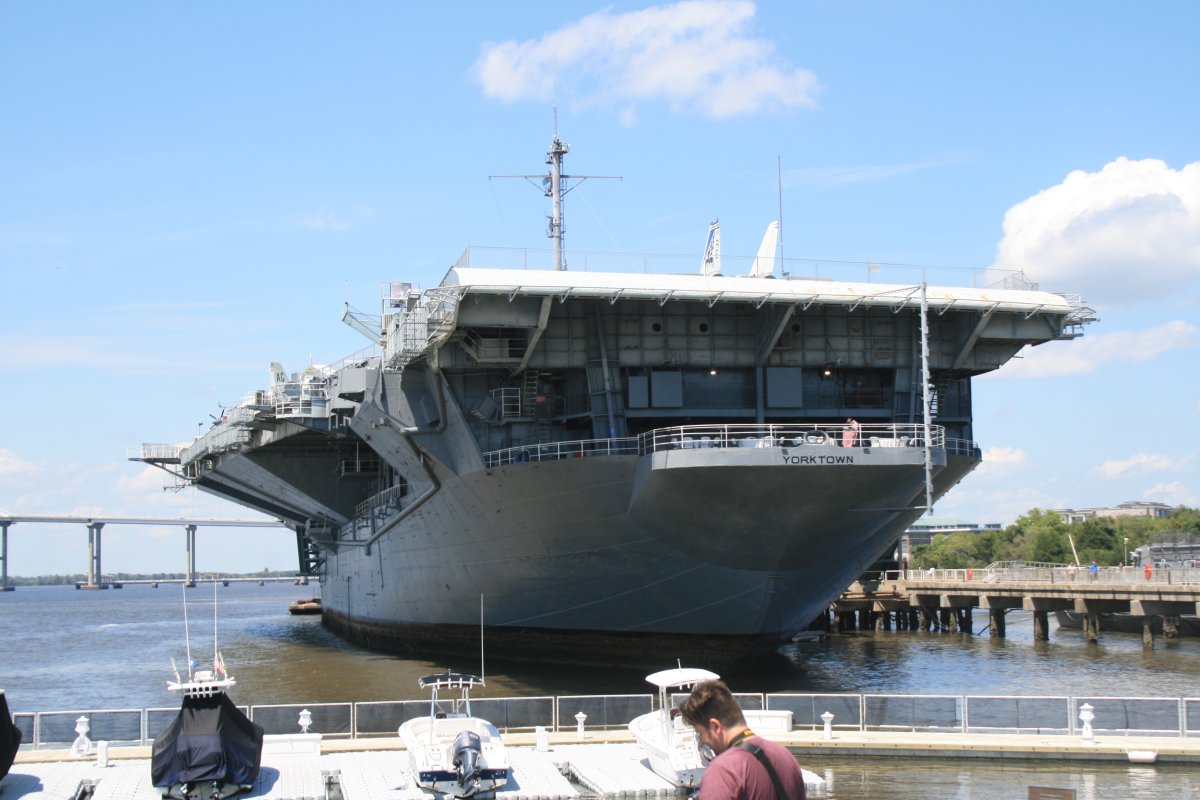 |
|
| |
| |
|
|
|
|
|
|







































